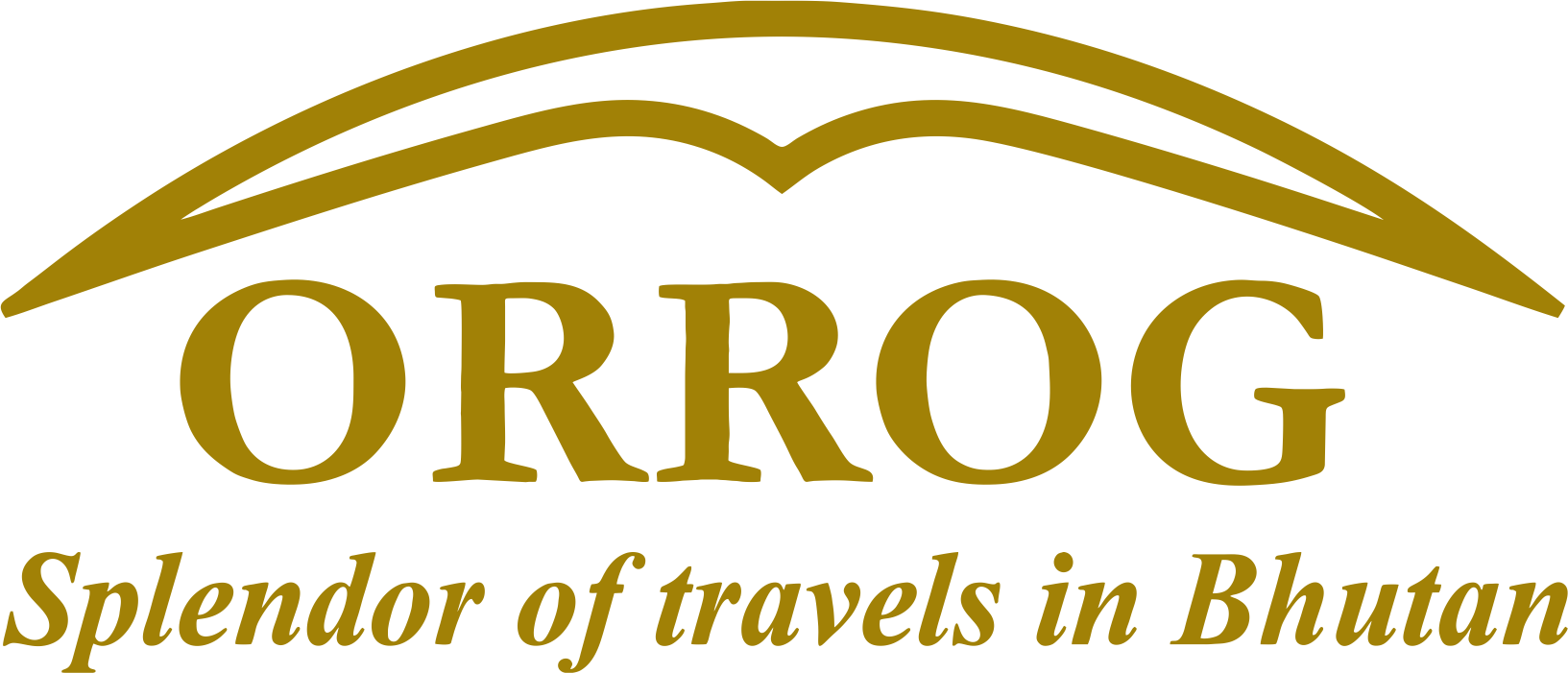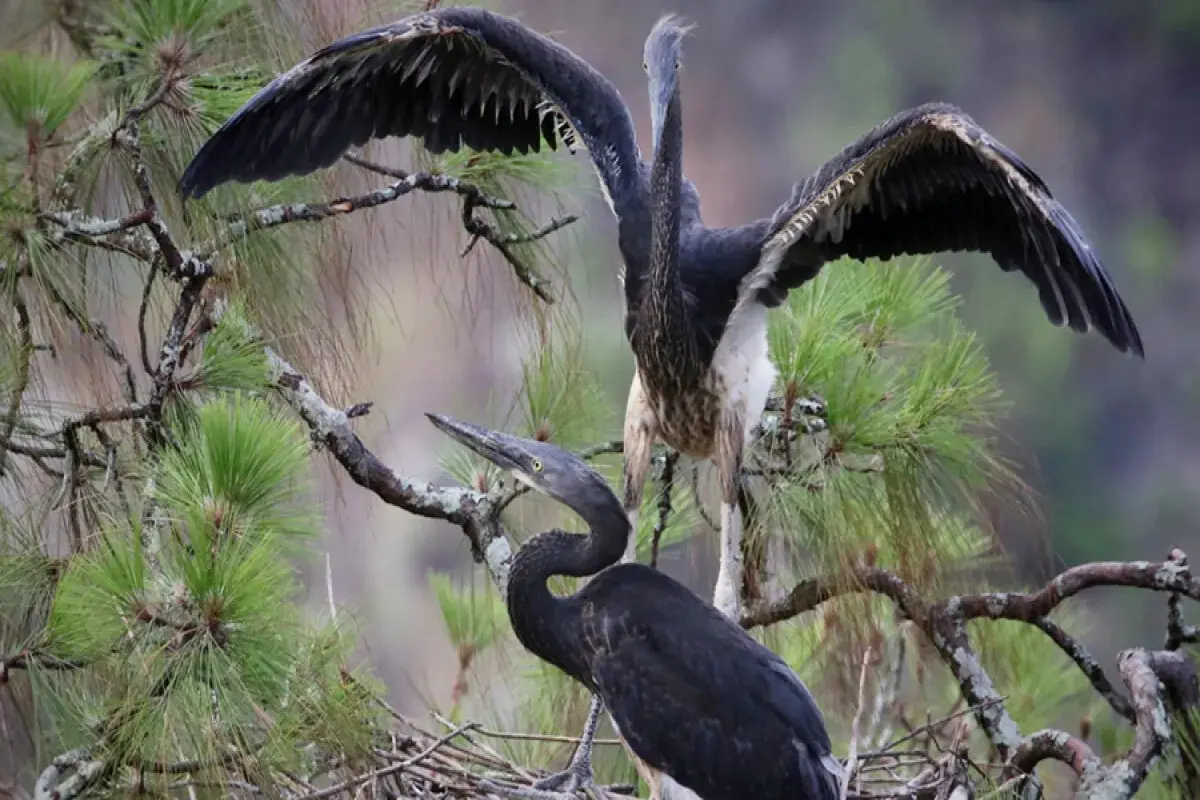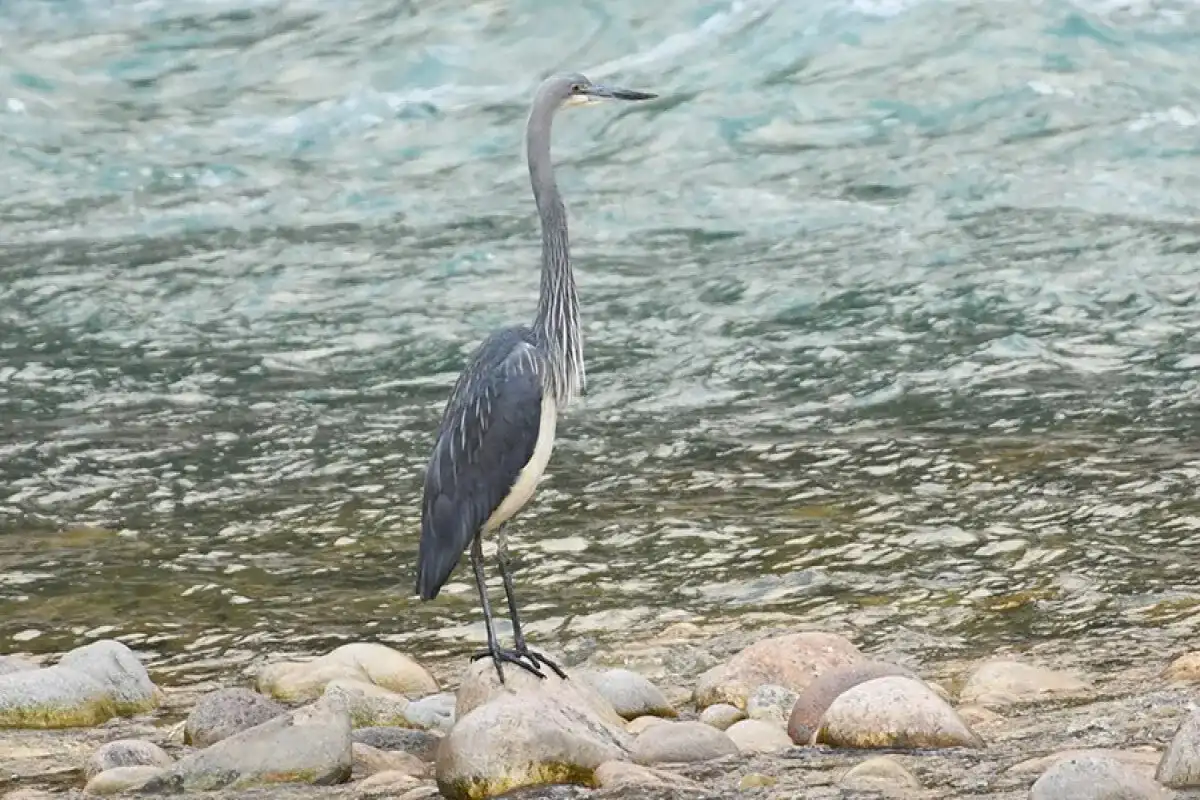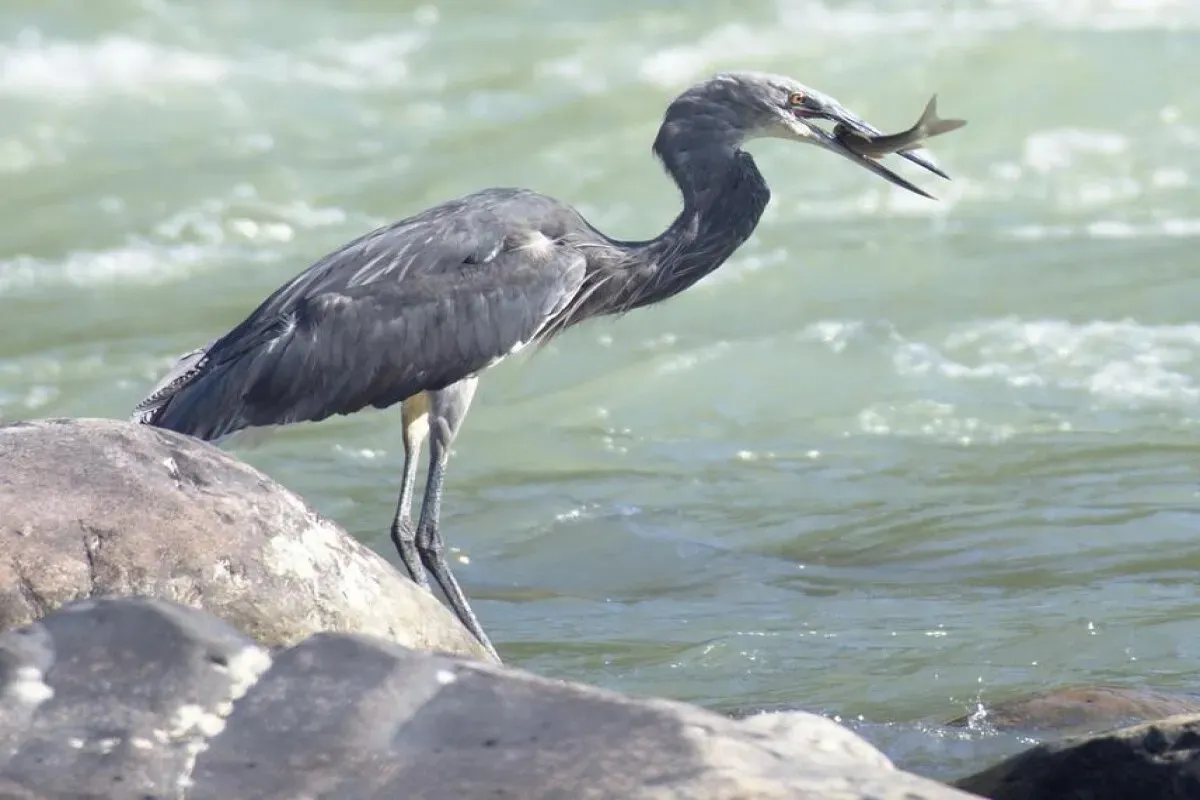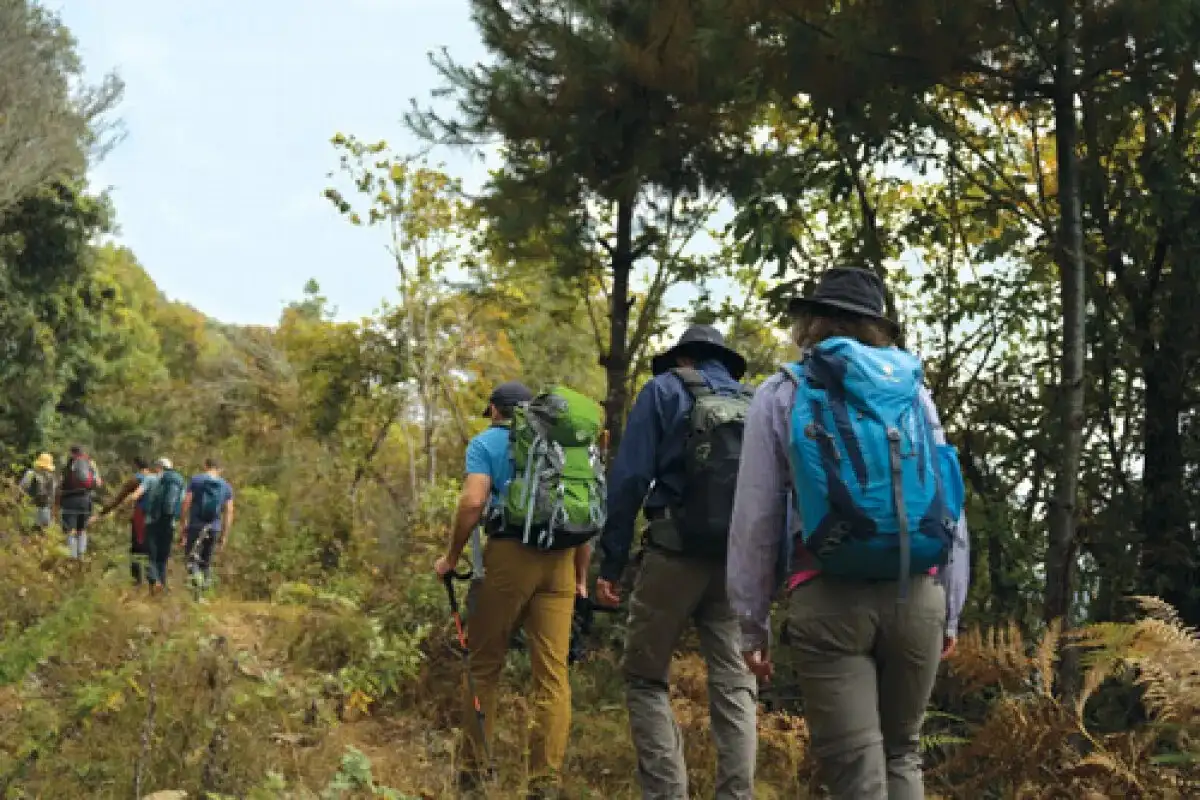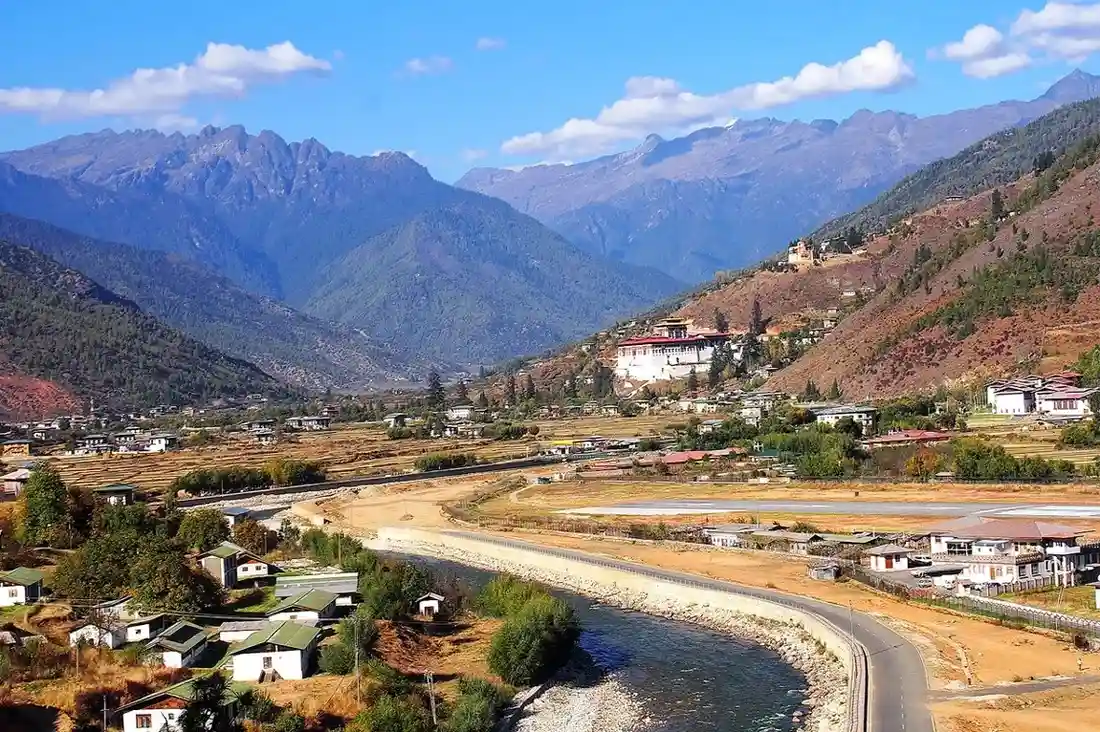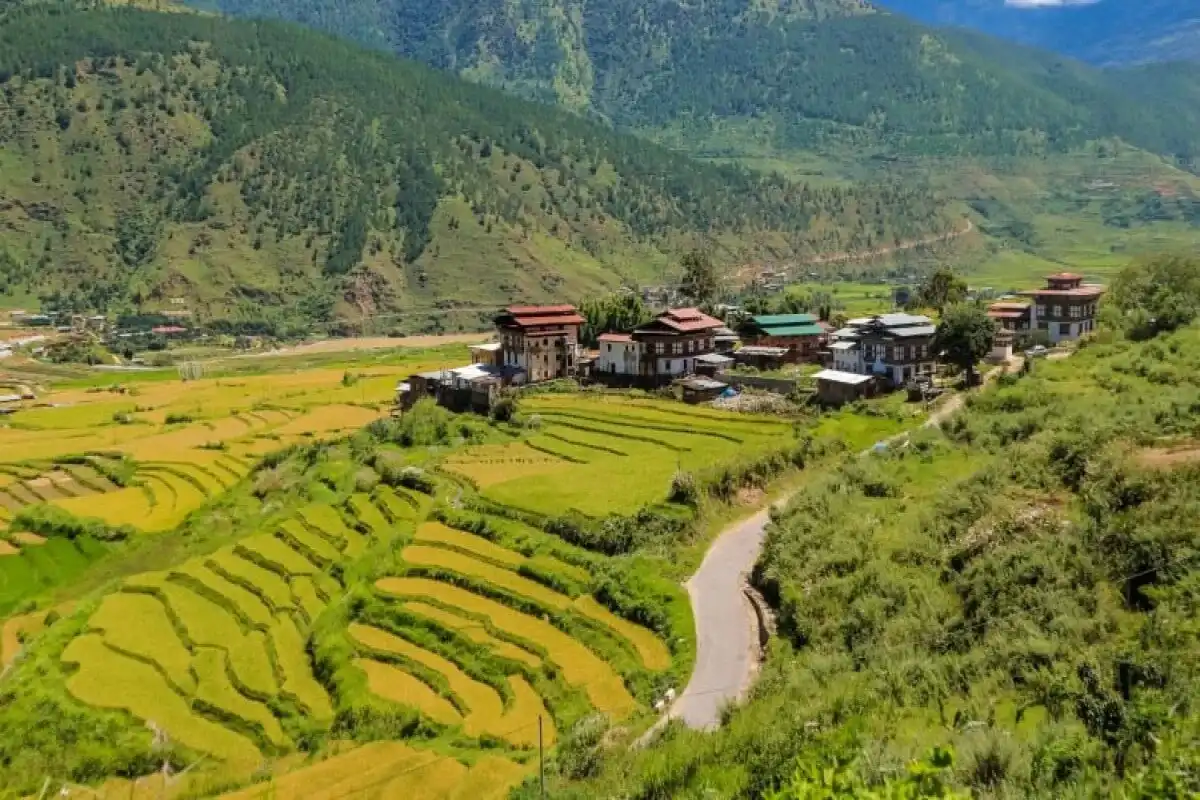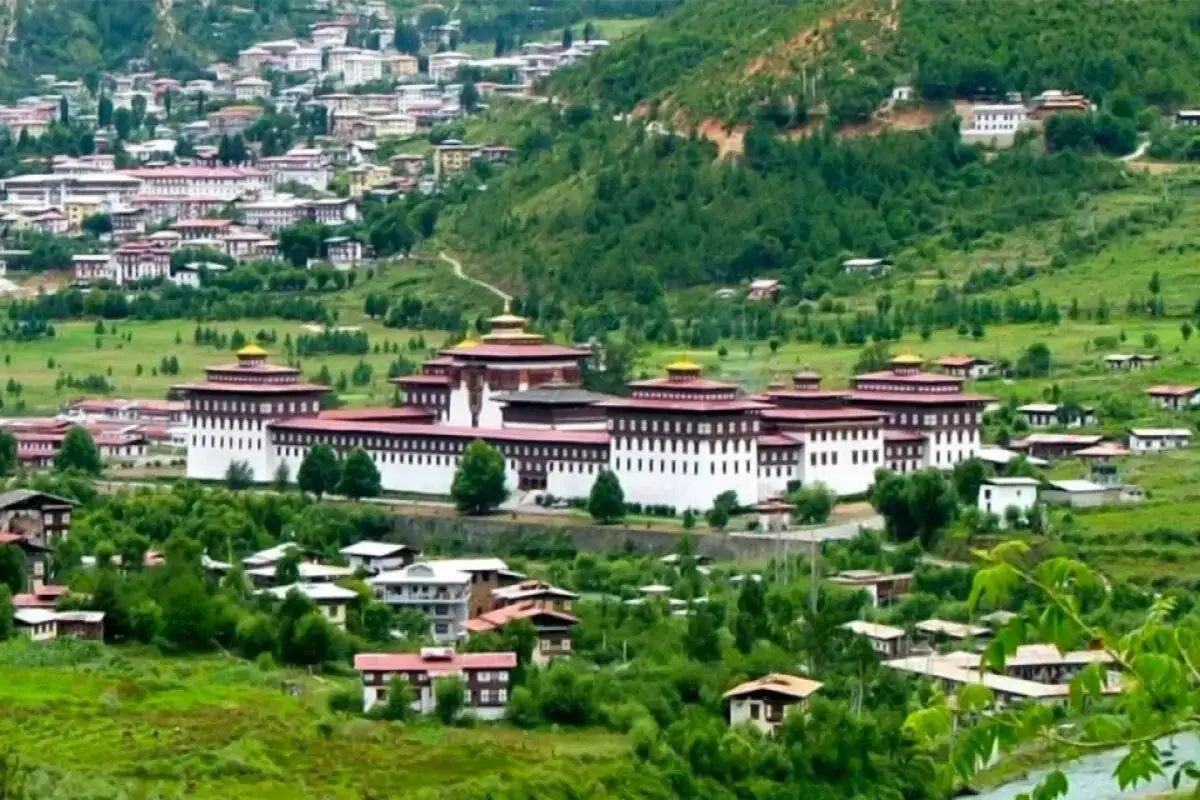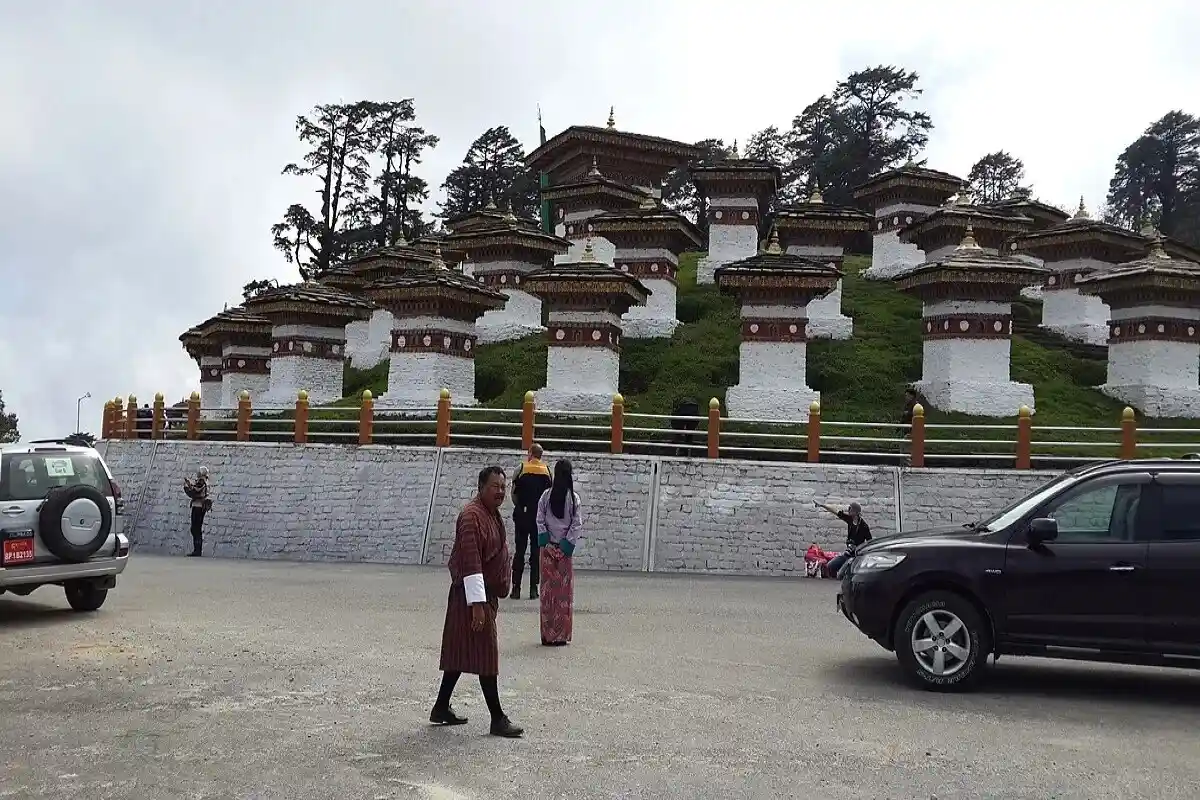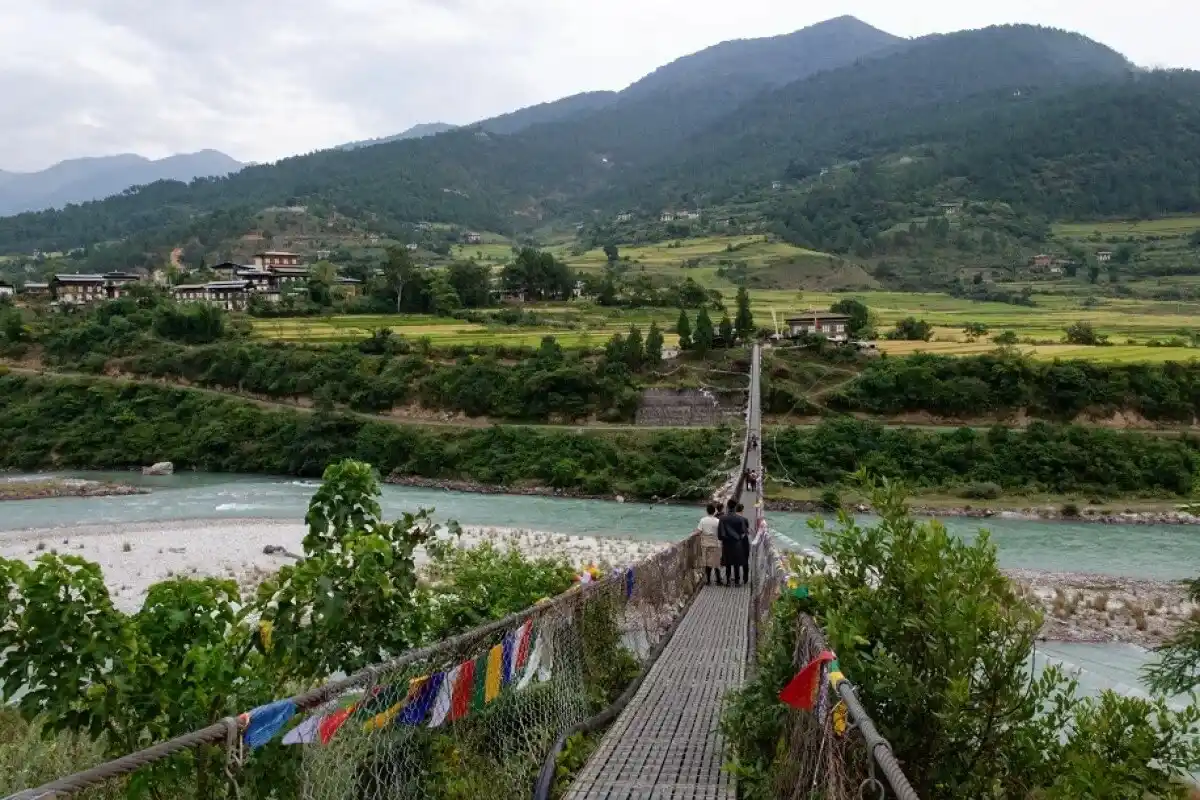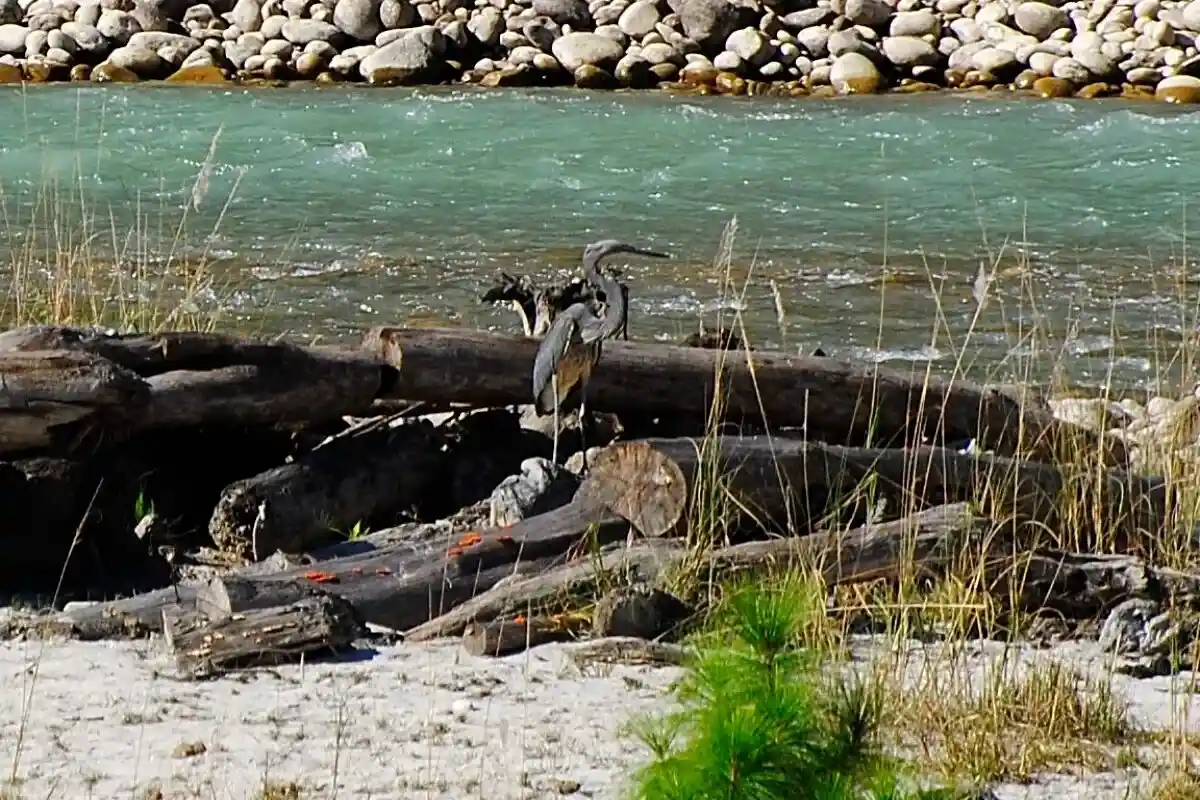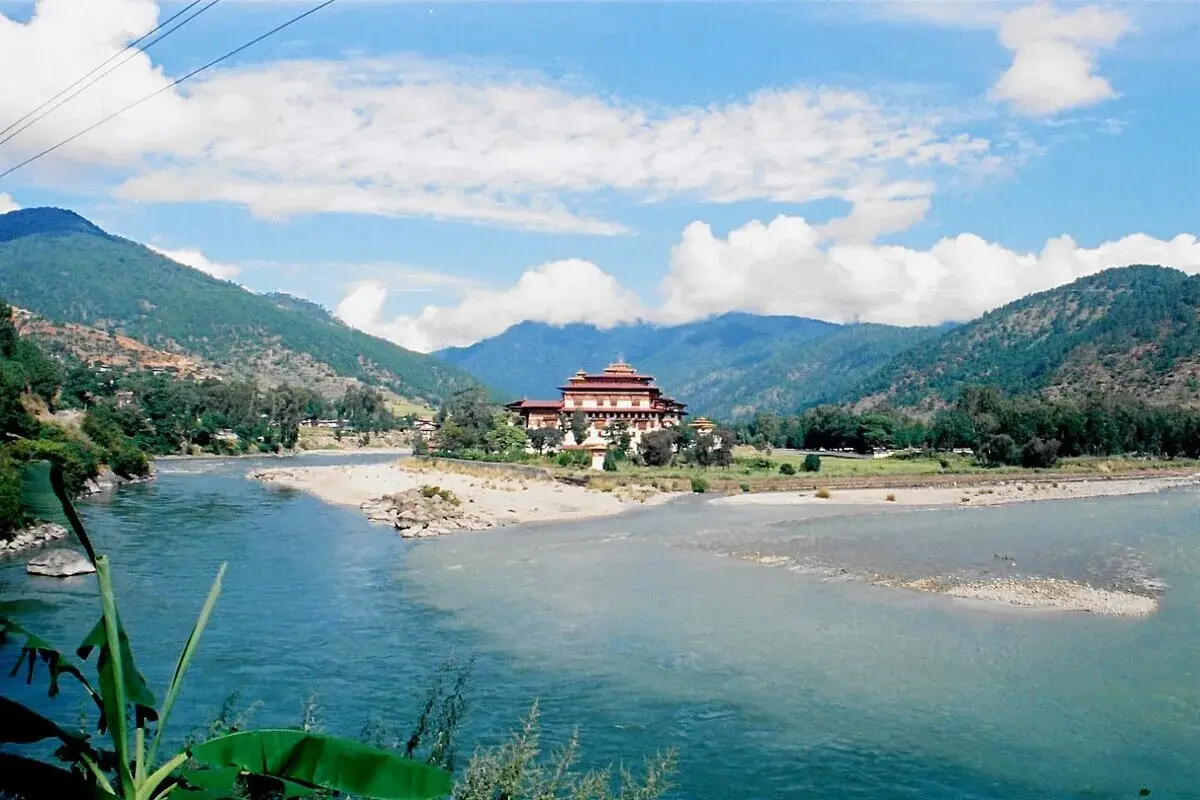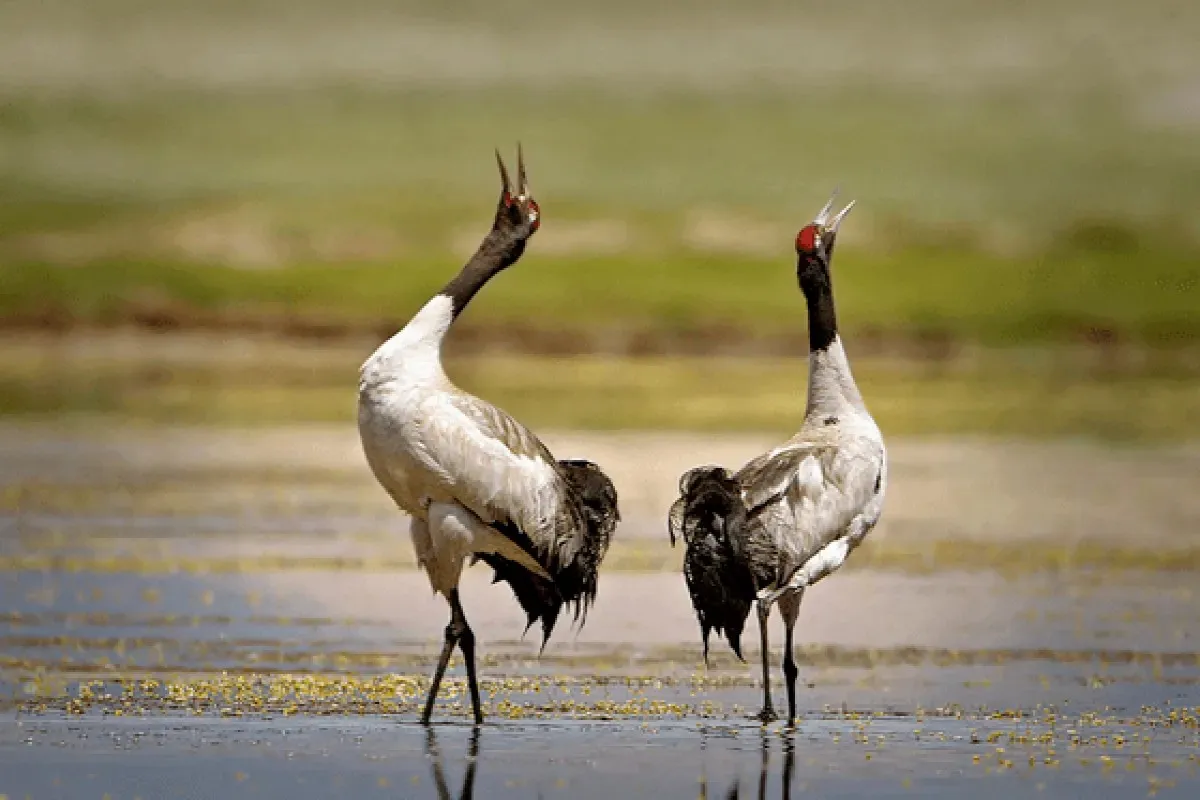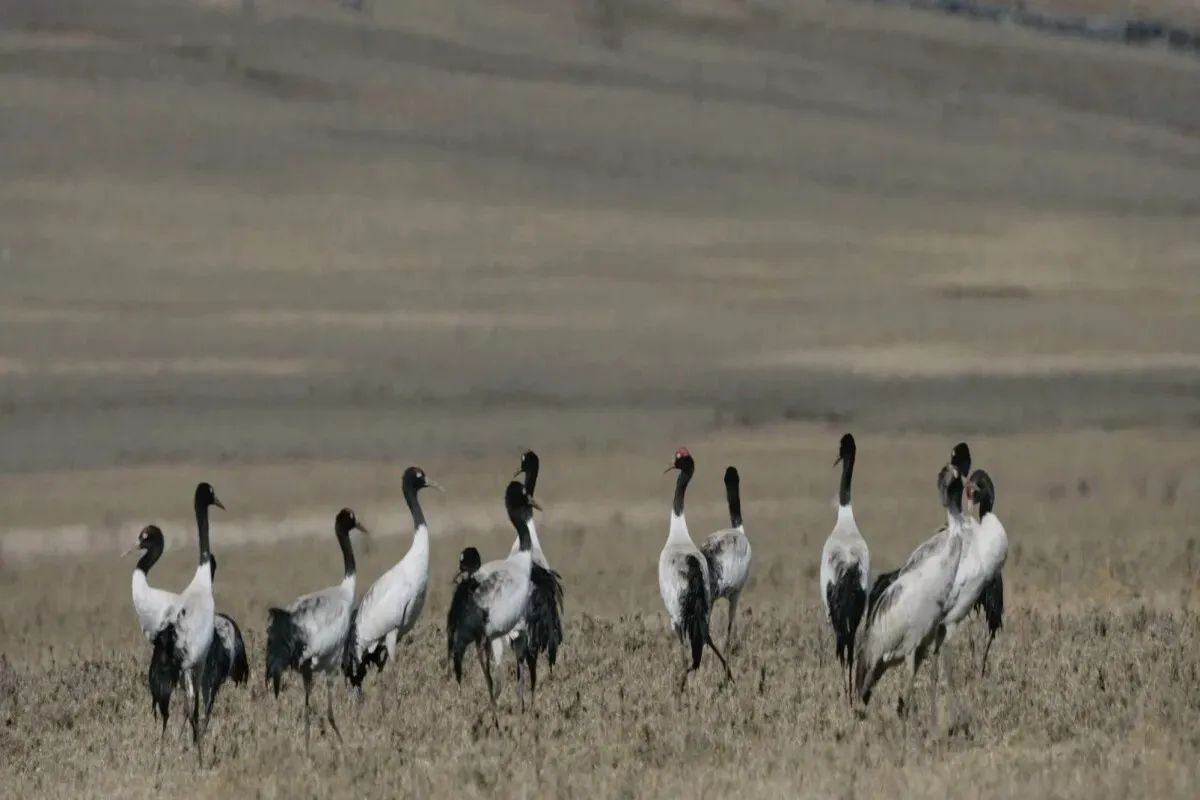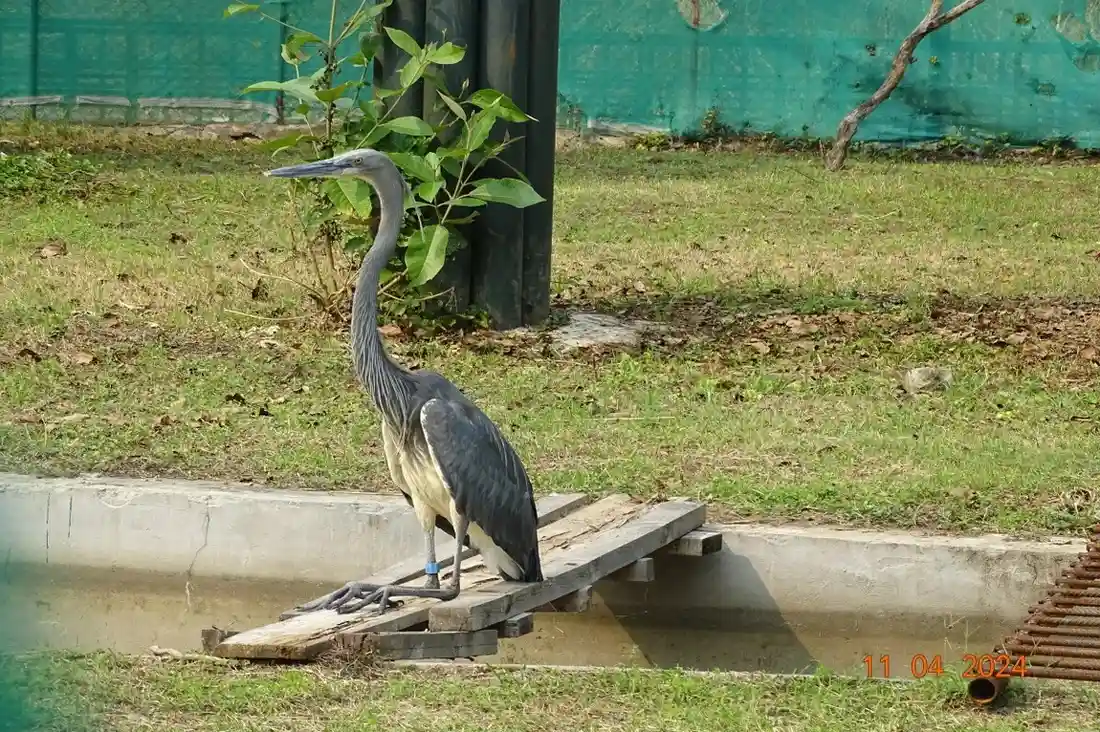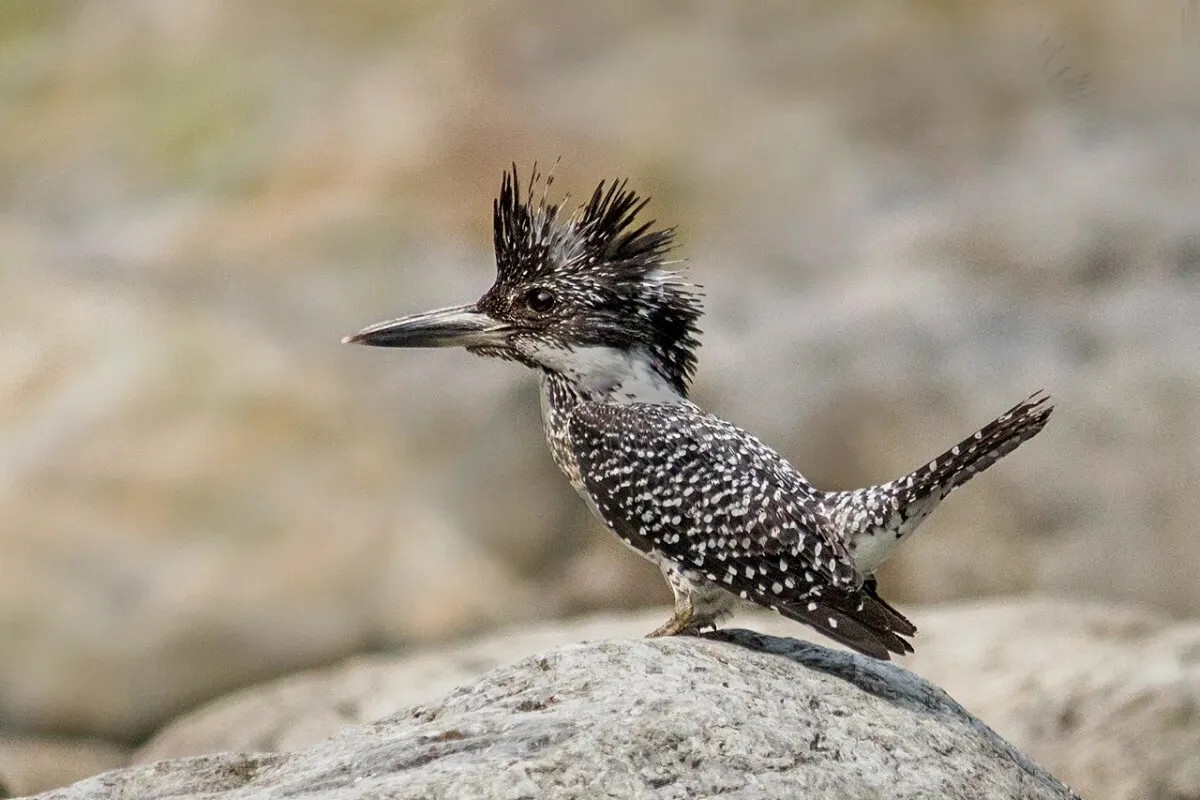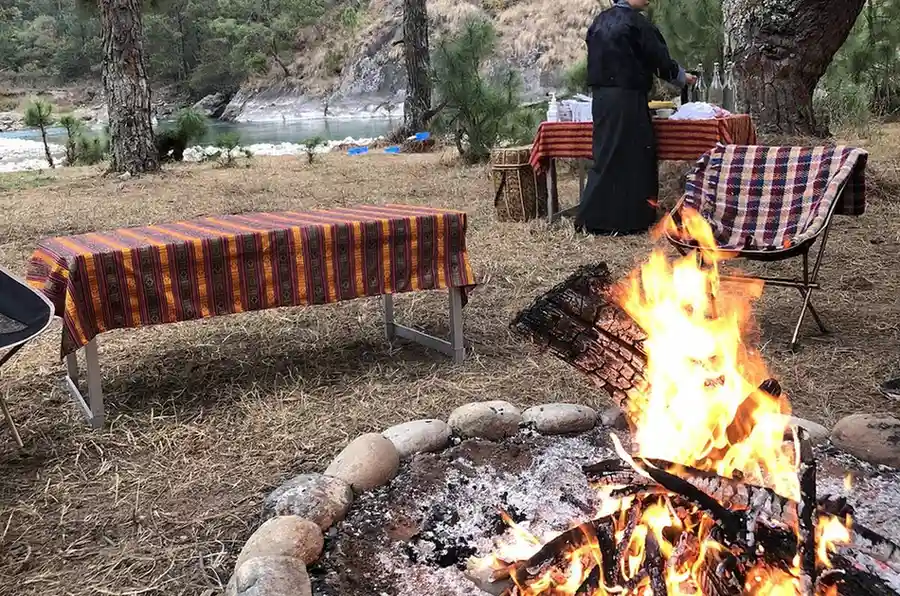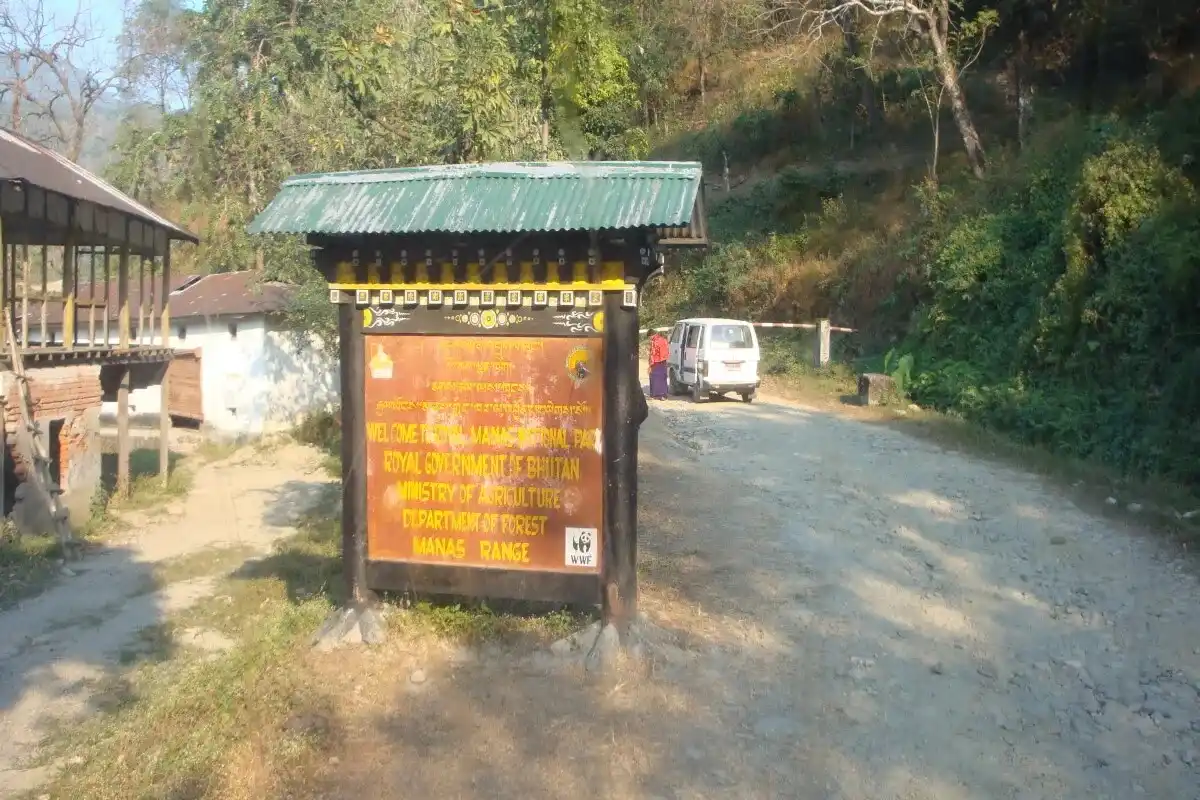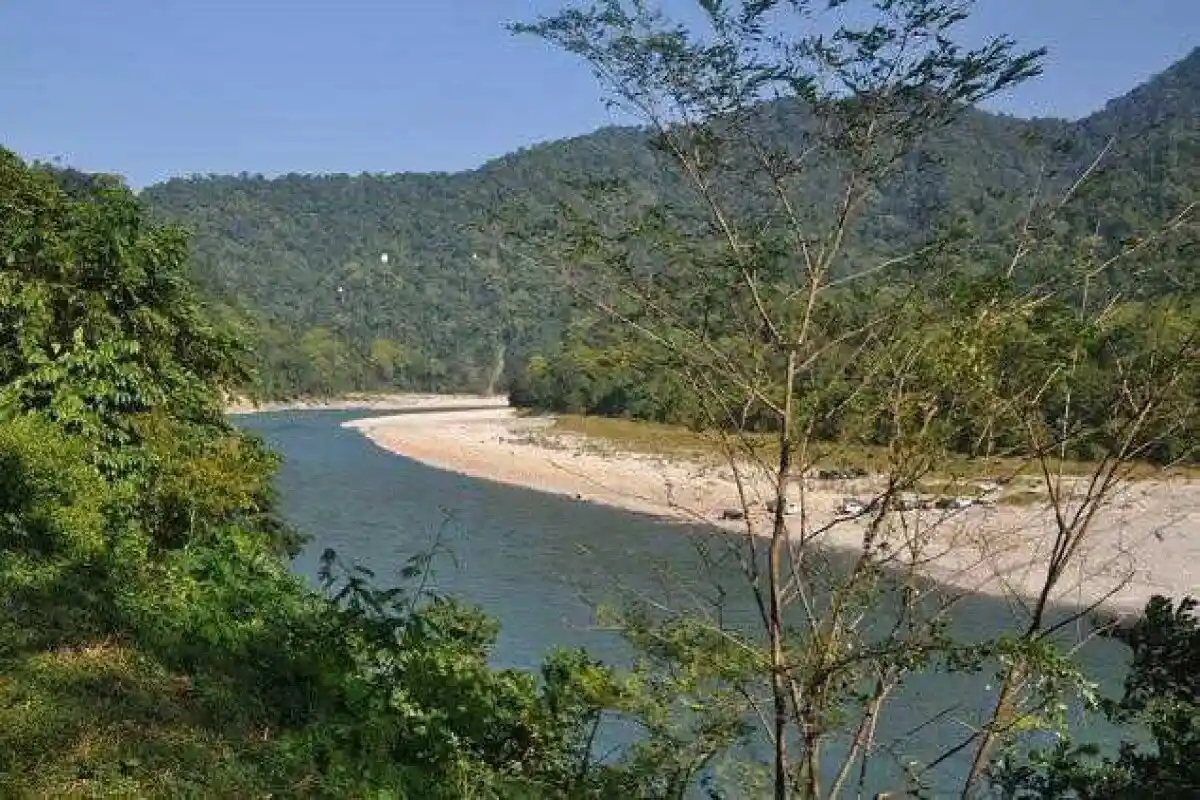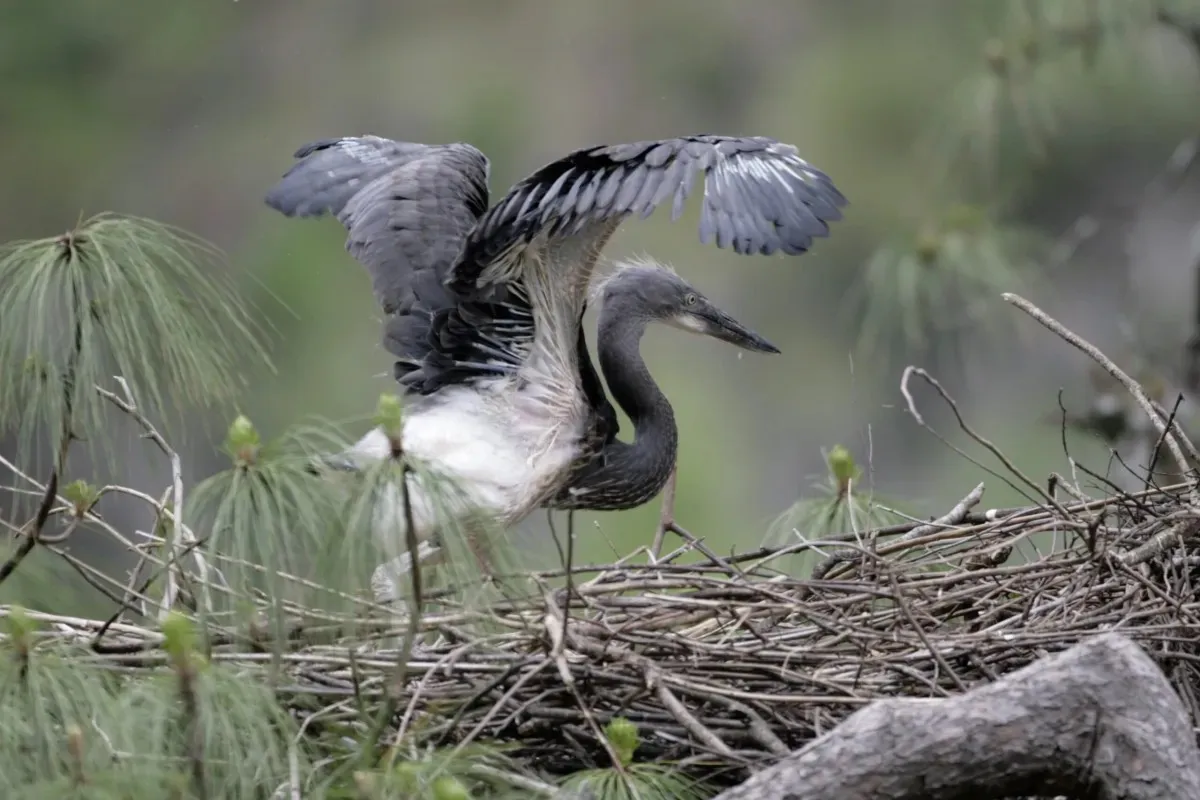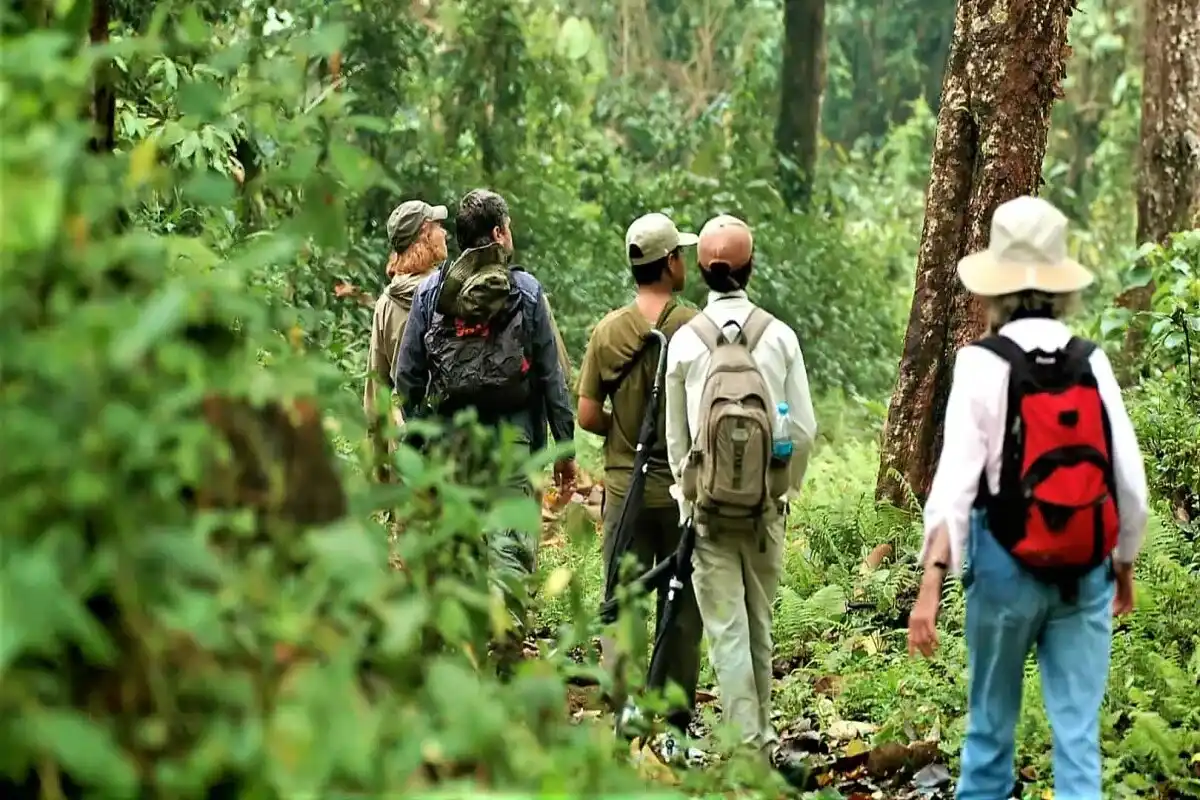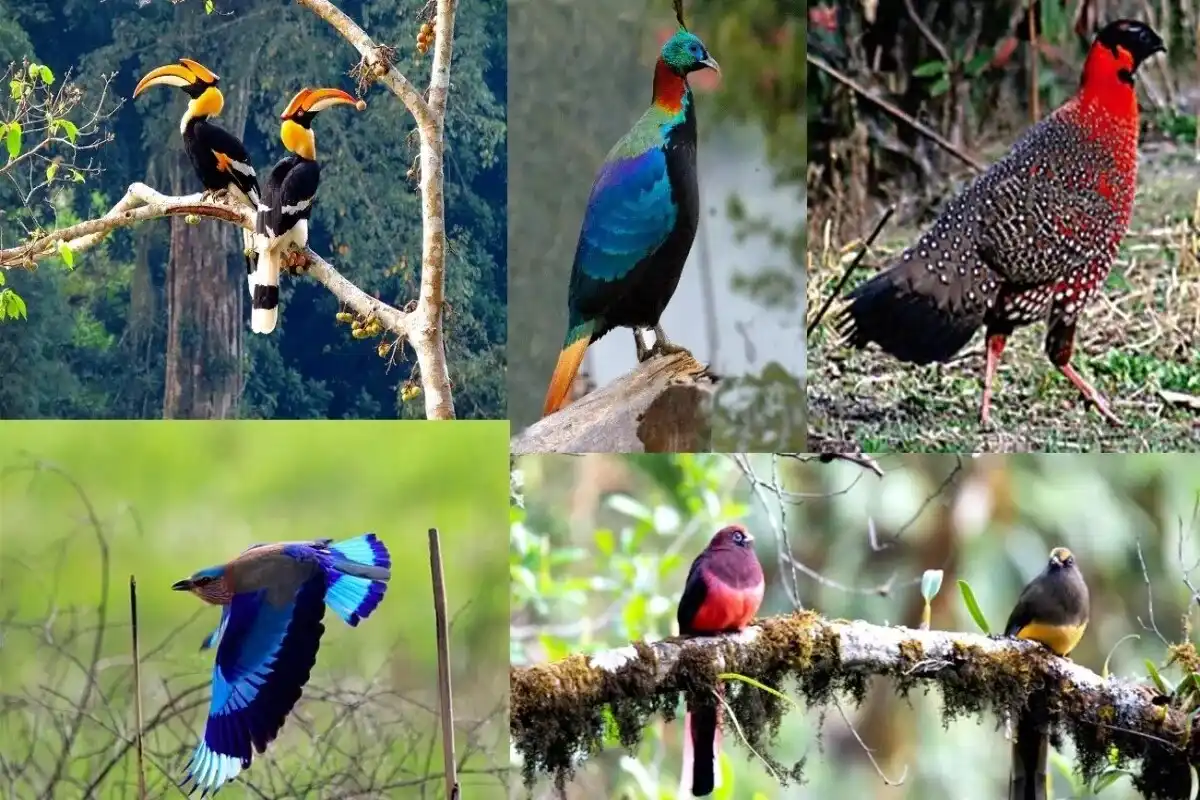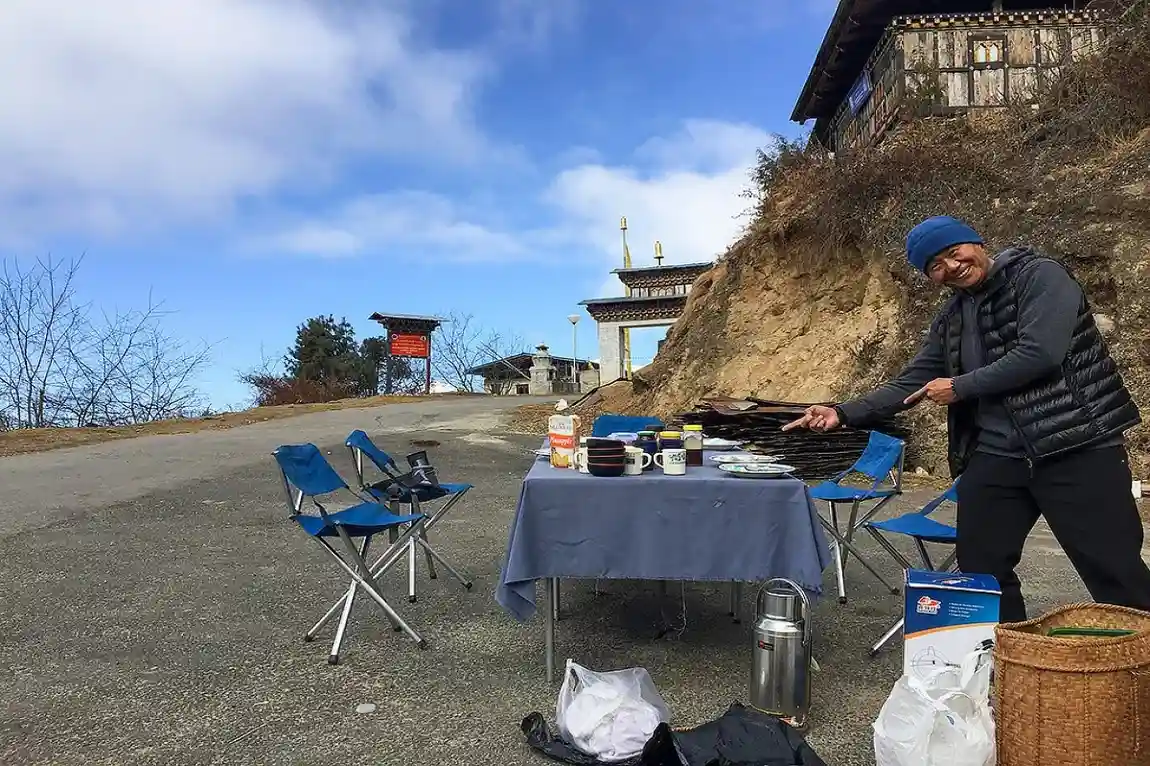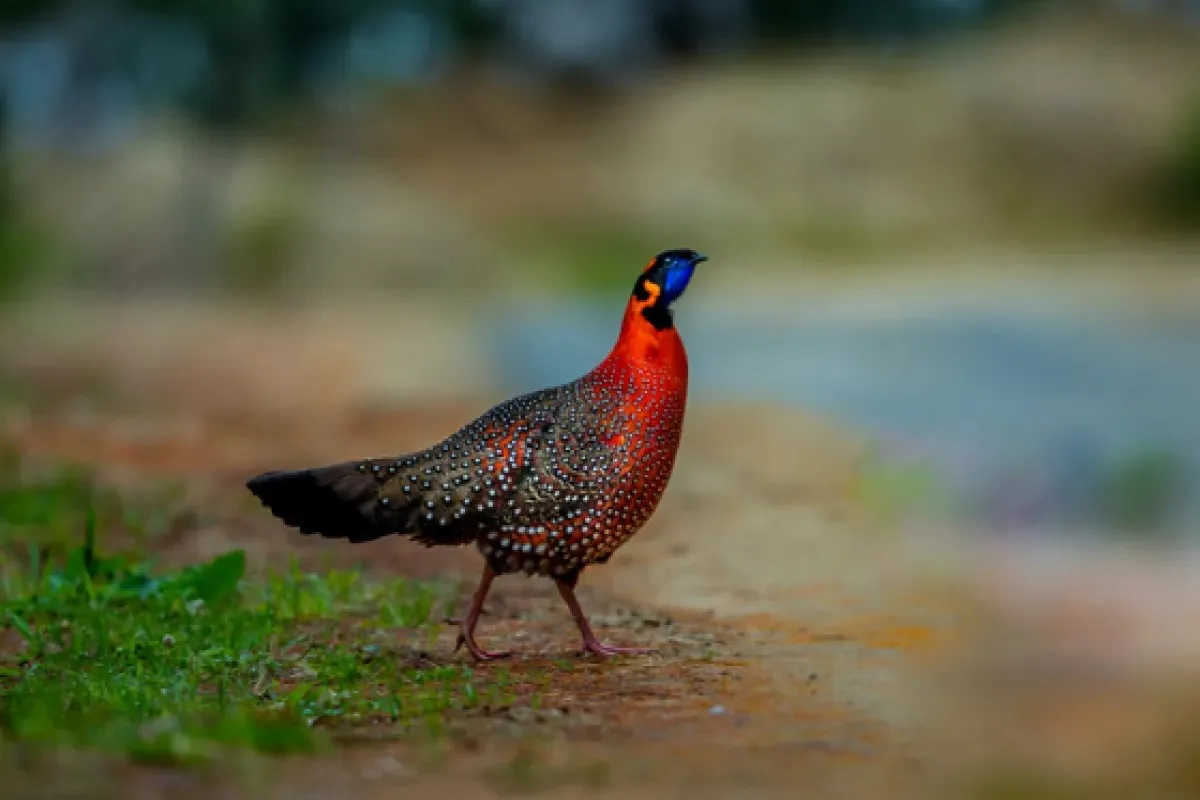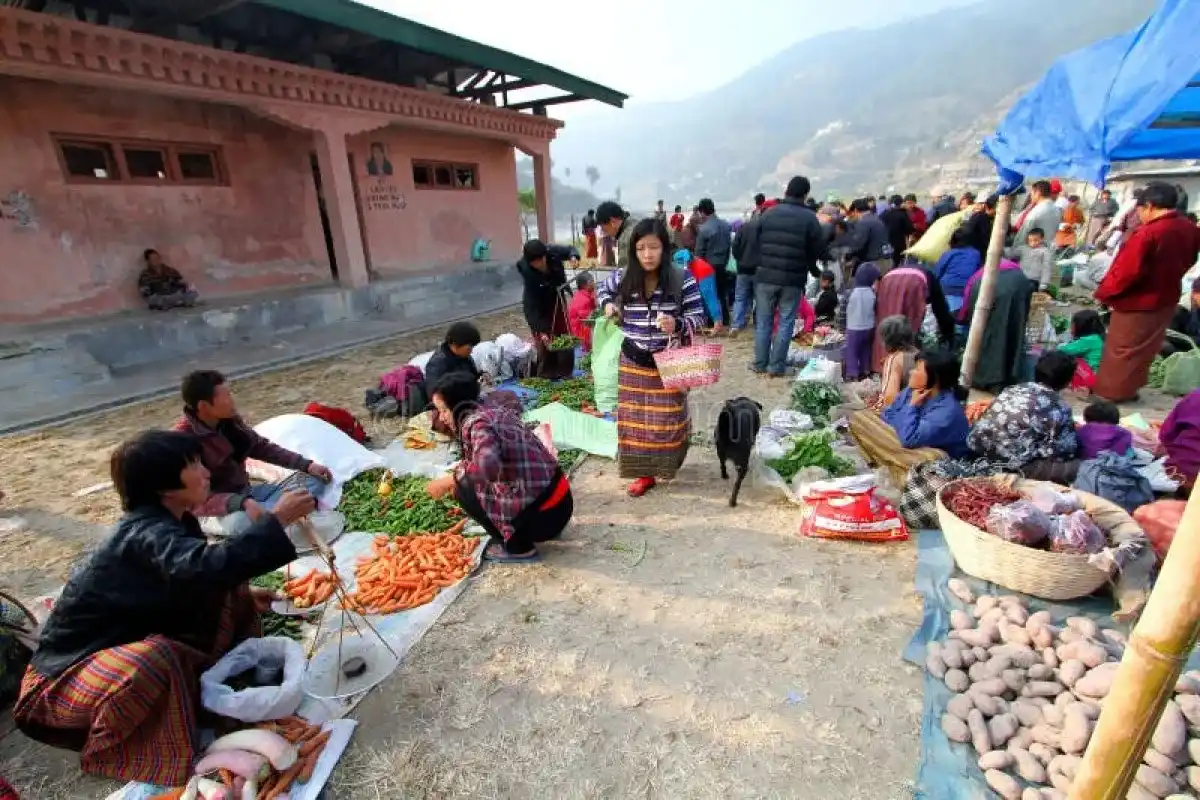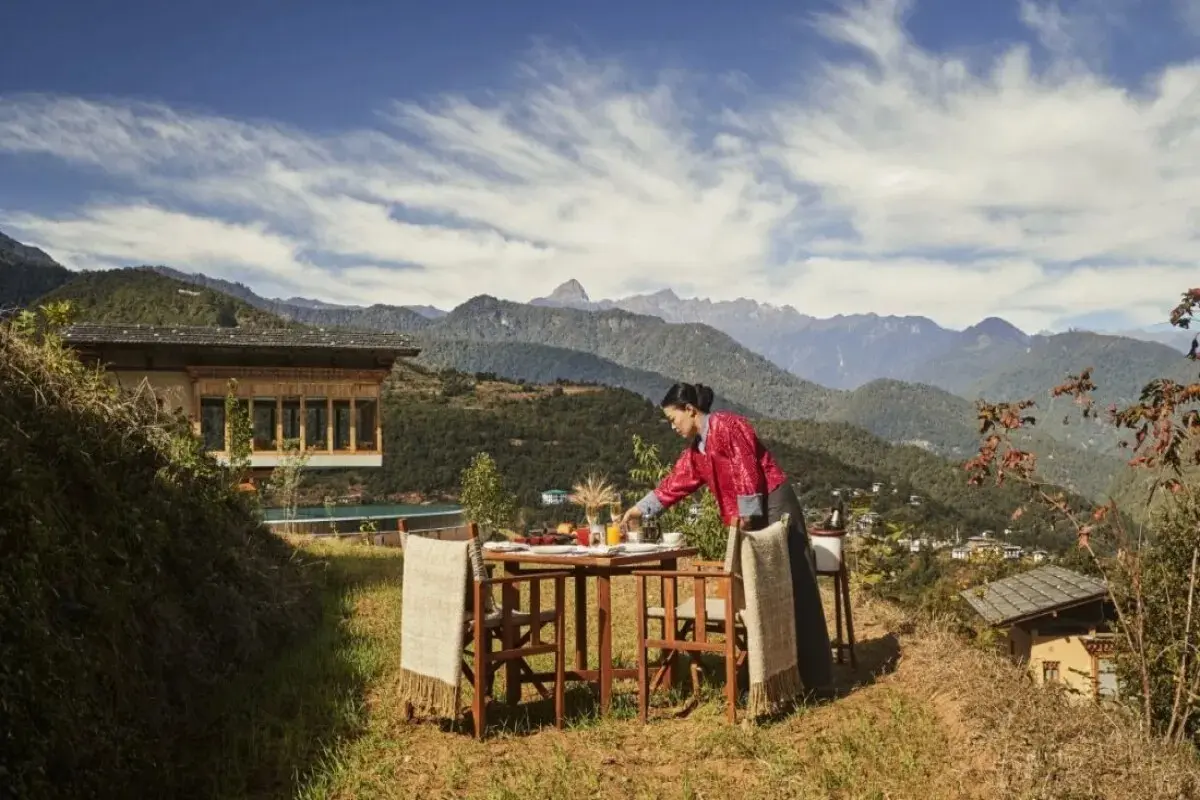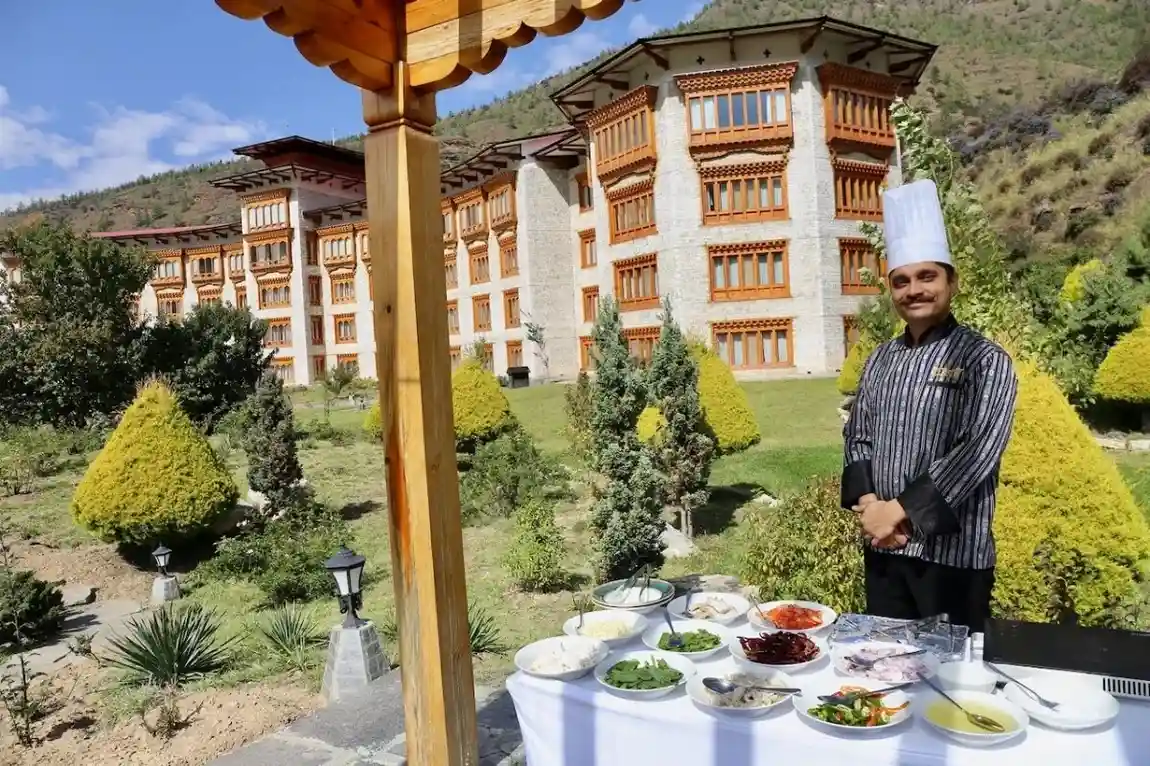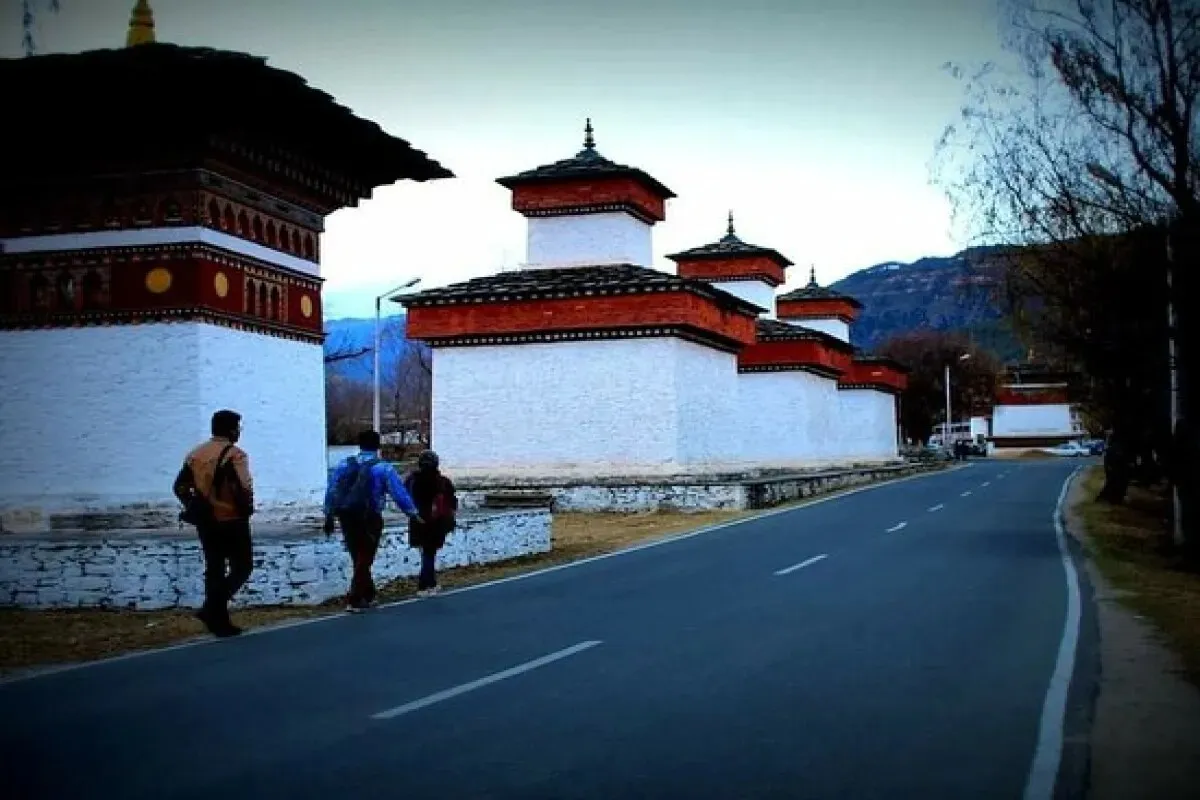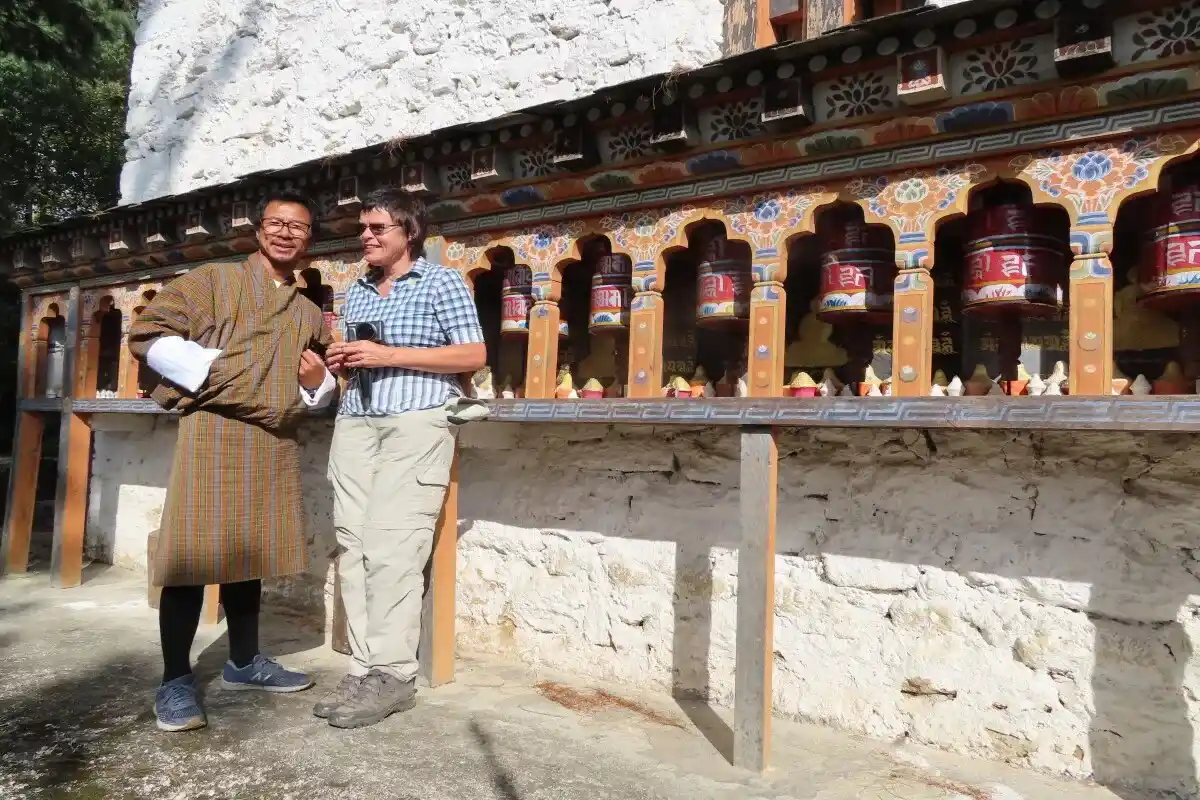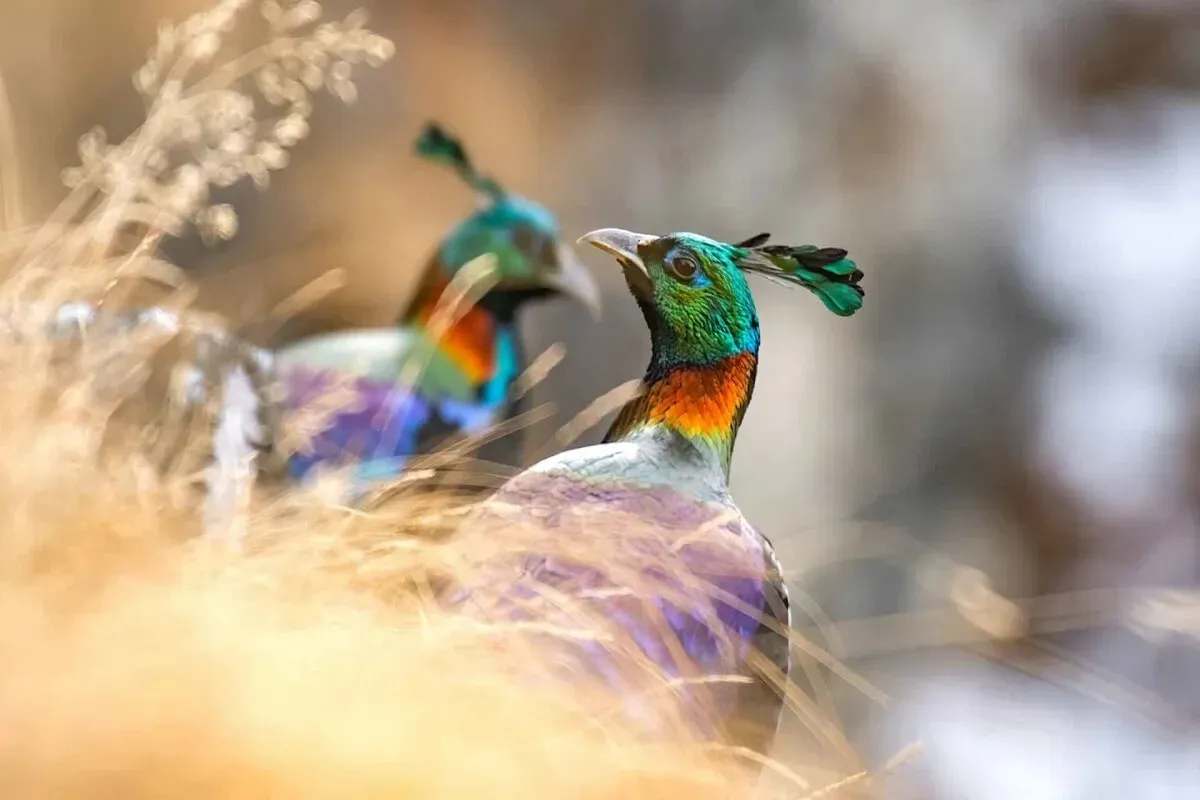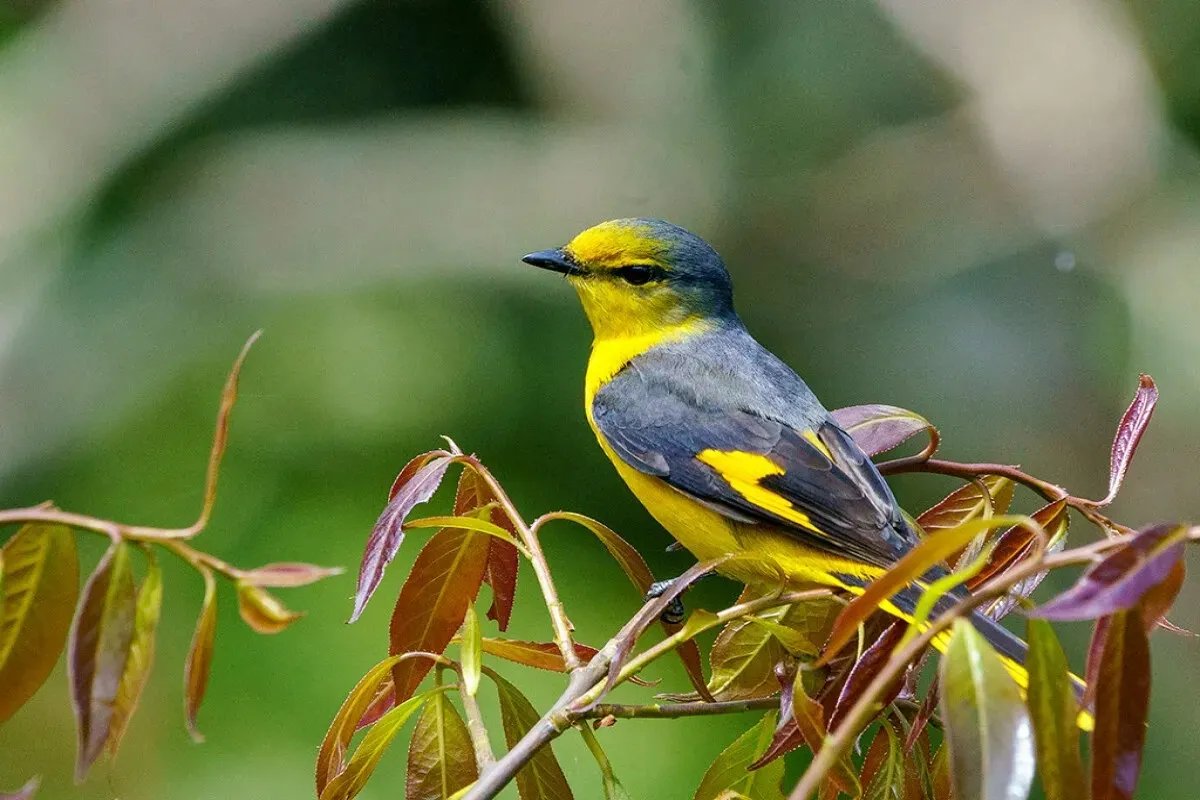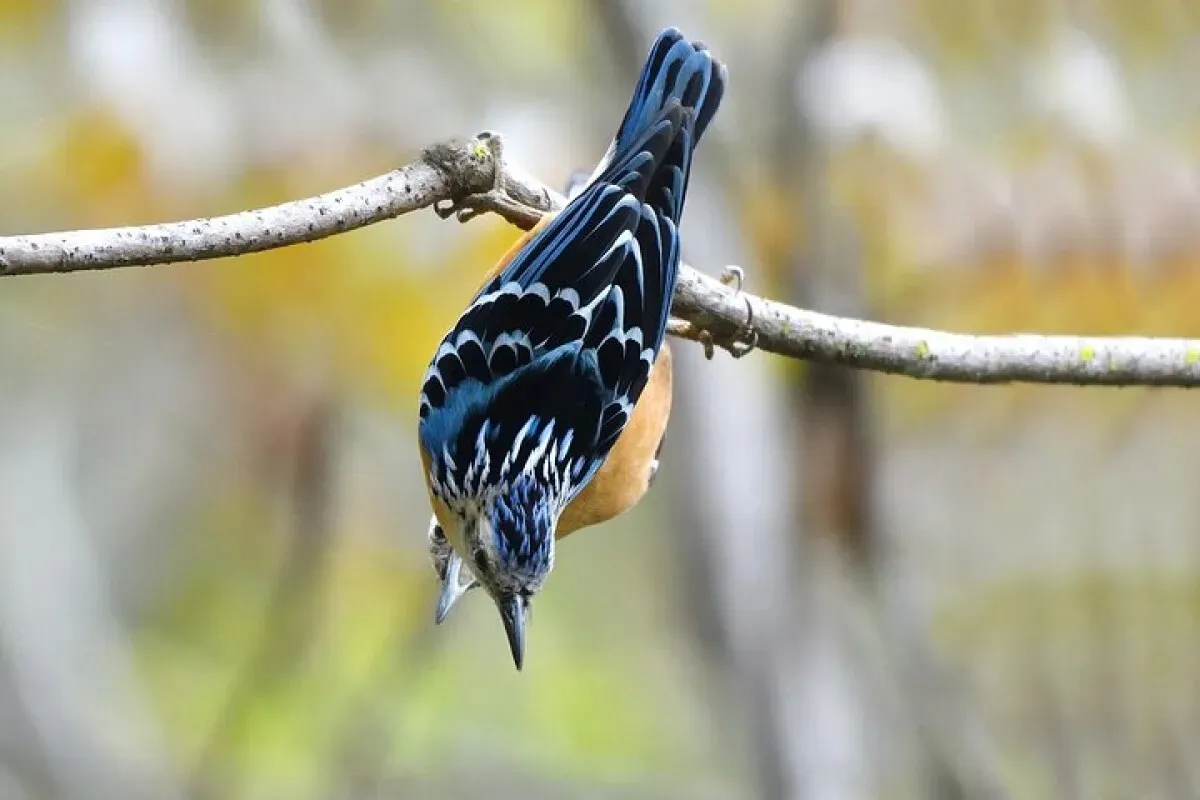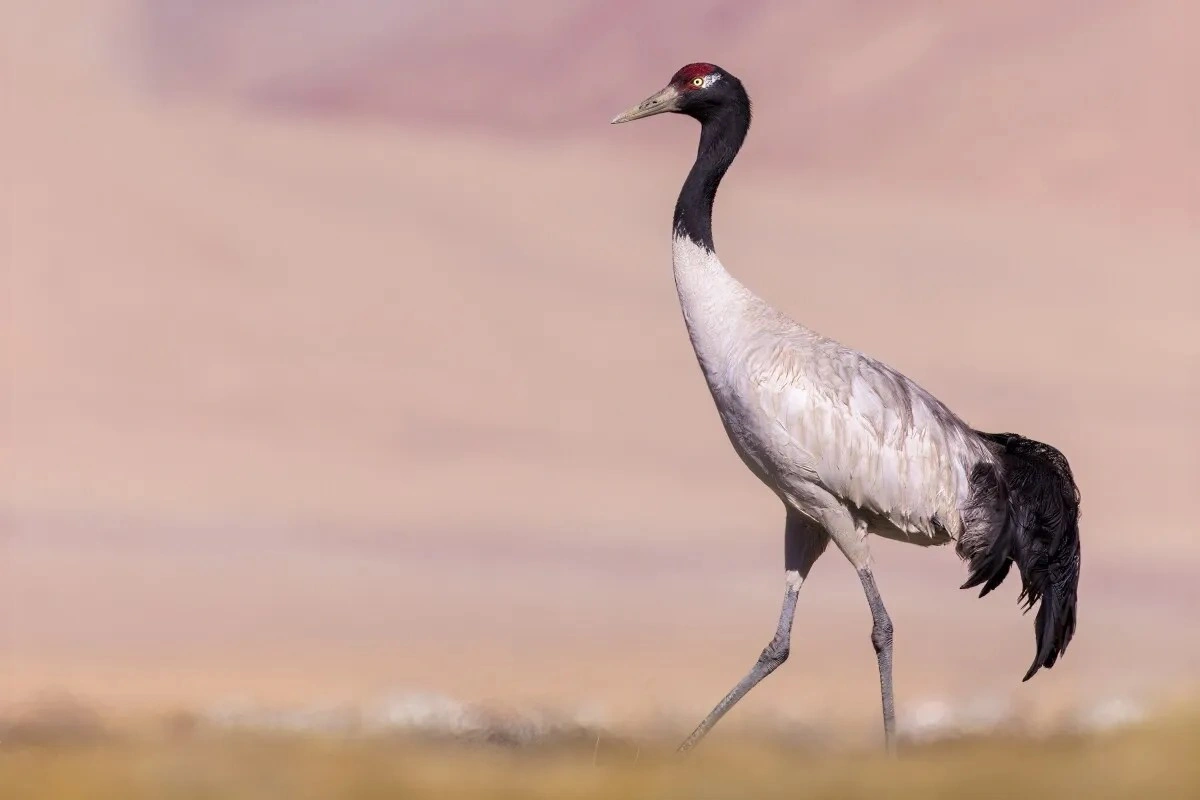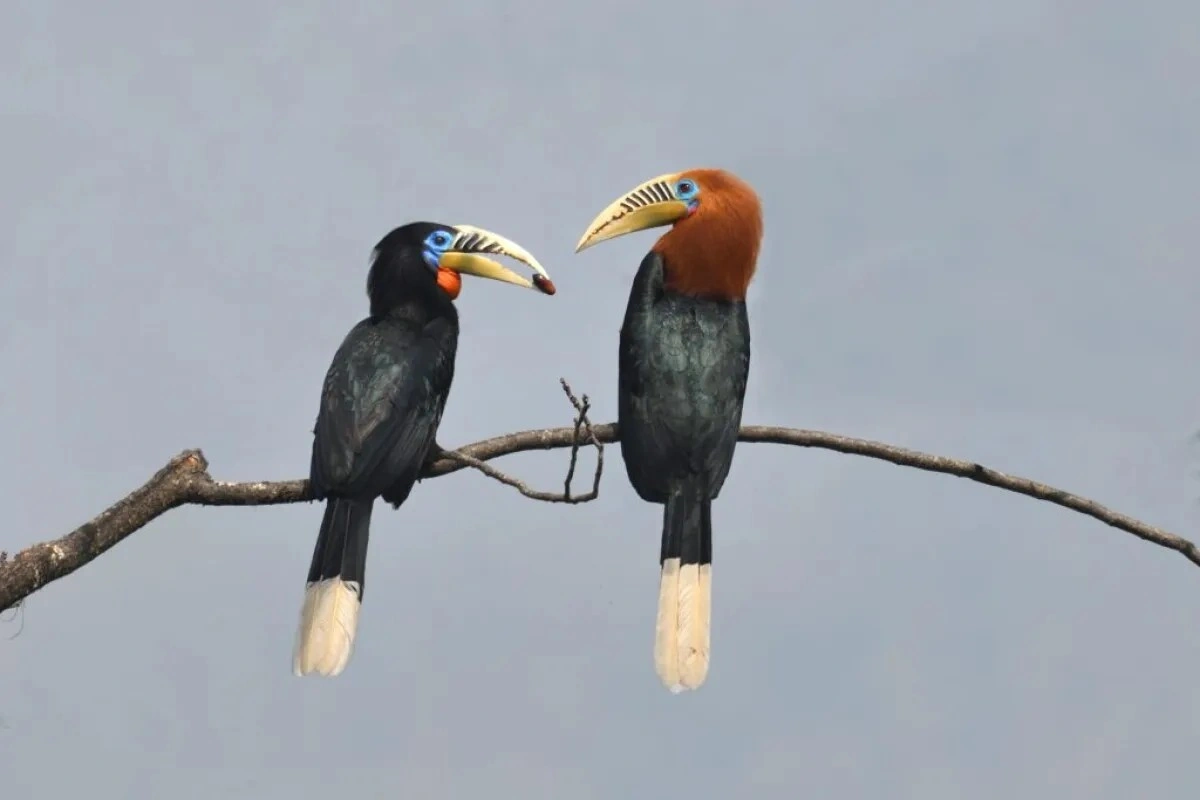White-Bellied Heron Tour - 8 Days
The White-Bellied Heron tour offers tourists the opportunity to observe one of the rarest birds in its natural habitat. This 8-day tour offers a great experience for travelers to explore the culture and nature of Bhutan. From visiting the birds’ habitat, exploring the valley, to observing culture and hiking through forests, this journey is informative as well as fun for adventure seekers, nature lovers, and bird enthusiasts.
- Spot the endangered White-Bellied Heron in key habitats like Pho Chhu and Kamechhu
- Guided birdwatching expeditions led by experienced naturalists
- Explore Bhutan’s serene wetlands and conservation zones
- Insights into Bhutan’s wildlife conservation initiatives
Trip Overview
The White-Bellied Heron is an endangered animal in the country. This is not just a bird, but it is also a commitment of Bhutan to conservation. With fewer than 60 individuals globally, Bhutan provides a safe space for this creature. This journey is not only about watching birds. It is also about seeing the natural beauty of Bhutan, learning about the environment, and understanding the local culture. As you look for the white-bellied heron, you will also get to enjoy local traditions, visit dzongs, and walk in beautiful nature. Whether you love birds, care about nature, or simply enjoy being outdoors, this tour will provide you with new ideas, special memories, and a deeper connection with the world around you.
Highlight
Discover Bhutan’s beautiful river valleys where the rare White-Bellied Heron and many other wildlife live. Here you’ll get to experience guided birdwatching in beautiful habitats rich with life. You have the golden opportunity to witness one of the world’s most endangered birds in its natural home. This will be a perfect journey for nature lovers, photographers, the people who are wildlife enthusiasts.
Spot the endangered White-Bellied Heron in key habitats like Pho Chhu and Kamechhu.
Pho Chhu and Kamechhu rivers are the only critical habitat left in the world that still protects the White-Bellied Heron. This quiet bird lives in calm river valleys with thick forests and rocky hills. It likes clean, fast-moving rivers where it can catch fish and frogs without being disturbed. In Bhutan, these places are kept safe, and people are careful not to bother the birds. On this tour, you will wake up early to visit the places where the heron usually sits or looks for food. Local guides who know the bird well will help you. The best time to see the heron is early in the morning or late in the afternoon, when it is most active.
Guided birdwatching expeditions led by experienced naturalists.
One of the most important parts of this trip is that you’ll have experienced guides who will walk you through the bird-watching process. They are well-experienced, so you can have all the required knowledge you want from this trip. These guides are not just professionals but those who are very familiar with the terrains, valleys, roads, and the behaviour of birds during each season. Whether you’re spotting the rare White-Bellied Heron or observing colorful Himalayan birds like the Himalayan Monal, Ibisbill, or Crested Kingfisher, your guide ensures that you’re in the right place at the right time.
Explore Bhutan’s serene wetlands and conservation zones.
Bhutan’s wetlands and conservation areas are an important part of ecological diversity in Bhutan. They are quieter and very peaceful, which is suitable for birds here. These areas have protected not just the White-Bellied Heron, but hundreds of other bird species, amphibians, fish, and aquatic plants. On this tour, you’ll get to explore wetlands like the Pho Chhu confluence, Kamechhu stream, and the other river banks near Khuruthang and Tingtibi. In this trip, visitors will get to explore these conservation areas while gaining knowledge of ways of protection and how everything is managed here.
Photography opportunities in some of Bhutan's most scenic settings.
Bhutan offers travellers a full package of less-travelled landscapes and the unspoiled beauty of nature. For bird photographers and nature lovers, this is an opportunity that shouldn't be missed by any chance. While you’re travelling this journey provides you exclusive view of animal behaviour with perfect lighting, which will be suitable for capturing photos. Bhutan’s location will help you eliminate distractions and help you spend time with nature and yourself. The light during sunrise and sunset is very pretty, as it gives a magical feel to every picture taken during these periods. Along with bird photography, the nearby temples, rivers, crop fields, and traditional Bhutanese architecture and buildings present there provide cultural importance and add diversity. Local guides often assist photographers, as they know how to help place a photographer for optimal shots while ensuring wildlife is undisturbed.
Insights into Bhutan’s wildlife conservation initiatives.
Bhutan is famous throughout the world for preserving nature. For over half a century, the Kingdom has reserved more than 70 percent of the country as forests, national parks, and wildlife sanctuaries. Bhutan is still growing into a fully experienced country. This tour will show how Bhutan cares for the environment. You will learn how the Royal Society for the Protection of Nature (RSPN) helps protect the White-Bellied Heron by working with the community, conducting studies, and educating them. Rangers who deal with the birds in their natural habitats may also be found at conservation centers. You will see some of the methods that Bhutan uses to manage sustainable development. The tour will show how the locals earn through eco-friendly tourism, which assists in conservation and benefits both people and wildlife.
Conclusion
The White-Bellied Heron Tour is not just a birdwatching trip; it is a call for all of you to celebrate and protect one of the planet’s most rare and endangered birds. This tour is the best combination of adventure with conservation, and culture, making it truly unique and pleasant for nature lovers and adventure seekers. Come with us to witness a beautiful bird. You will leave with more than just photographs, a sense of purpose, and more interest in nature.
The White-Bellied Heron is an endangered animal in the country. This is not just a bird, but it is also a commitment of Bhutan to conservation. With fewer than 60 individuals globally, Bhutan provides a safe space for this creature. This journey is not only about watching birds. It is also about seeing the natural beauty of Bhutan, learning about the environment, and understanding the local culture. As you look for the white-bellied heron, you will also get to enjoy local traditions, visit dzongs, and walk in beautiful nature. Whether you love birds, care about nature, or simply enjoy being outdoors, this tour will provide you with new ideas, special memories, and a deeper connection with the world around you.
Highlight
Discover Bhutan’s beautiful river valleys where the rare White-Bellied Heron and many other wildlife live. Here you’ll get to experience guided birdwatching in beautiful habitats rich with life. You have the golden opportunity to witness one of the world’s most endangered birds in its natural home. This will be a perfect journey for nature lovers, photographers, the people who are wildlife enthusiasts.
Spot the endangered White-Bellied Heron in key habitats like Pho Chhu and Kamechhu.
Pho Chhu and Kamechhu rivers are the only critical habitat left in the world that still protects the White-Bellied Heron. This quiet bird lives in calm river valleys with thick forests and rocky hills. It likes clean, fast-moving rivers where it can catch fish and frogs without being disturbed. In Bhutan, these places are kept safe, and people are careful not to bother the birds. On this tour, you will wake up early to visit the places where the heron usually sits or looks for food. Local guides who know the bird well will help you. The best time to see the heron is early in the morning or late in the afternoon, when it is most active.
Guided birdwatching expeditions led by experienced naturalists.
One of the most important parts of this trip is that you’ll have experienced guides who will walk you through the bird-watching process. They are well-experienced, so you can have all the required knowledge you want from this trip. These guides are not just professionals but those who are very familiar with the terrains, valleys, roads, and the behaviour of birds during each season. Whether you’re spotting the rare White-Bellied Heron or observing colorful Himalayan birds like the Himalayan Monal, Ibisbill, or Crested Kingfisher, your guide ensures that you’re in the right place at the right time.
Explore Bhutan’s serene wetlands and conservation zones.
Bhutan’s wetlands and conservation areas are an important part of ecological diversity in Bhutan. They are quieter and very peaceful, which is suitable for birds here. These areas have protected not just the White-Bellied Heron, but hundreds of other bird species, amphibians, fish, and aquatic plants. On this tour, you’ll get to explore wetlands like the Pho Chhu confluence, Kamechhu stream, and the other river banks near Khuruthang and Tingtibi. In this trip, visitors will get to explore these conservation areas while gaining knowledge of ways of protection and how everything is managed here.
Photography opportunities in some of Bhutan's most scenic settings.
Bhutan offers travellers a full package of less-travelled landscapes and the unspoiled beauty of nature. For bird photographers and nature lovers, this is an opportunity that shouldn't be missed by any chance. While you’re travelling this journey provides you exclusive view of animal behaviour with perfect lighting, which will be suitable for capturing photos. Bhutan’s location will help you eliminate distractions and help you spend time with nature and yourself. The light during sunrise and sunset is very pretty, as it gives a magical feel to every picture taken during these periods. Along with bird photography, the nearby temples, rivers, crop fields, and traditional Bhutanese architecture and buildings present there provide cultural importance and add diversity. Local guides often assist photographers, as they know how to help place a photographer for optimal shots while ensuring wildlife is undisturbed.
Insights into Bhutan’s wildlife conservation initiatives.
Bhutan is famous throughout the world for preserving nature. For over half a century, the Kingdom has reserved more than 70 percent of the country as forests, national parks, and wildlife sanctuaries. Bhutan is still growing into a fully experienced country. This tour will show how Bhutan cares for the environment. You will learn how the Royal Society for the Protection of Nature (RSPN) helps protect the White-Bellied Heron by working with the community, conducting studies, and educating them. Rangers who deal with the birds in their natural habitats may also be found at conservation centers. You will see some of the methods that Bhutan uses to manage sustainable development. The tour will show how the locals earn through eco-friendly tourism, which assists in conservation and benefits both people and wildlife.
Conclusion
The White-Bellied Heron Tour is not just a birdwatching trip; it is a call for all of you to celebrate and protect one of the planet’s most rare and endangered birds. This tour is the best combination of adventure with conservation, and culture, making it truly unique and pleasant for nature lovers and adventure seekers. Come with us to witness a beautiful bird. You will leave with more than just photographs, a sense of purpose, and more interest in nature.
Short Itinerary
Arrive in Paro and transfer to Thimphu,Visit Tashichho Dzong and enjoy an evening
Drive to Punakha via Dochula Pass,Enjoy scenic views
Birdwatching at Pho Chhu River to spot the White-Bellied Heron,Visit Punakha Dzong, Nature walk along Kamechhu
Visit Khuruthang,Spot birds like Brown Dipper and Crested Kingfisher
Drive to Tingtibi,Birdwatching for species like Rufous-necked Hornbill and Scarlet Minivet.
Birdwatching in the Royal Manas National Park buffer zone
Return to Punakha,Wildlife Spotting
Drive back to Paro
Price Includes
- Pick-up and drop-off services
We provide a pick-up service from the airport to the hotel on your arrival day and from the hotel to the airport on the departure day.
- Lunch, Breakfast, and Dinner
All meals during the trek will be provided by the company. However, personal food items like coffee, tea, cold drinks, etc, are not included in the package.
- A guide proficient in English
A certified, English-speaking guide will accompany you throughout the trip. The guide will offer information about the trail, culture, nature, and history, and ensure your safety and a smooth experience.
- Comfortable SUV vehicle
A private SUV will be used for road travel before or after the trek. These vehicles are ideal for Bhutan’s hilly terrain and provide a comfortable ride.
- All types of entry costs
This covers all permit fees, monument entrance fees, park fees, and any other official charges required for trekking or sightseeing activities during the tour.
- Professional Drive
We ensure a safe and smooth drive during your tour. We have licensed and experienced drivers for that.
- Sleeping bag and tent
Quality sleeping bags and tents are provided for your comfort and warmth during the camping nights on the trek. So, you don’t have to worry about buying a new one.
- Farewell dinner
A special farewell meal, typically arranged in a traditional restaurant, is offered at the end of the tour to celebrate the journey and thank the participants.
- Evening Tea/coffee with snacks
Each evening, you’ll be served tea or coffee along with light snacks like biscuits and popcorn.
- Drinking Water
Safe and clean drinking water is provided throughout the trek.
- Pick-up and drop-off services
We provide a pick-up service from the airport to the hotel on your arrival day and from the hotel to the airport on the departure day.
- Lunch, Breakfast, and Dinner
All meals during the trek will be provided by the company. However, personal food items like coffee, tea, cold drinks, etc, are not included in the package.
- A guide proficient in English
A certified, English-speaking guide will accompany you throughout the trip. The guide will offer information about the trail, culture, nature, and history, and ensure your safety and a smooth experience.
- Comfortable SUV vehicle
A private SUV will be used for road travel before or after the trek. These vehicles are ideal for Bhutan’s hilly terrain and provide a comfortable ride.
- All types of entry costs
This covers all permit fees, monument entrance fees, park fees, and any other official charges required for trekking or sightseeing activities during the tour.
- Professional Drive
We ensure a safe and smooth drive during your tour. We have licensed and experienced drivers for that.
- Sleeping bag and tent
Quality sleeping bags and tents are provided for your comfort and warmth during the camping nights on the trek. So, you don’t have to worry about buying a new one.
- Farewell dinner
A special farewell meal, typically arranged in a traditional restaurant, is offered at the end of the tour to celebrate the journey and thank the participants.
- Evening Tea/coffee with snacks
Each evening, you’ll be served tea or coffee along with light snacks like biscuits and popcorn.
- Drinking Water
Safe and clean drinking water is provided throughout the trek.
Price Excludes
- International Airfare
- Visa Charges and Insurance
- Individual expenditures
- Additional-day lodging
- Laundry and telephone expenses
- Tips for the guide and the porter
- International Airfare
- Visa Charges and Insurance
- Individual expenditures
- Additional-day lodging
- Laundry and telephone expenses
- Tips for the guide and the porter
White-Bellied Heron Tour Itinerary
As you land in Paro, you’ll be greeted by the beautiful hills and mountains present there. You’ll get to see the pleasant view of the mountain, such as Mount Jomolhari. After arriving, your guide will welcome you to Bhutan, and from here you’ll embark journey from Paro to Thimpu. Thimphu is Bhutan’s current capital. From Paro, the ride is about a 1.5 to 2-hour drive only. On the ride, you’ll get the opportunity to stop and admire the beauty of nature. After you check into the hotel in Thimpu, you’ll get to see the famous Tashichho Dzong, a fortress-monastery housing government offices and monks’ quarters. In the evening, you can relax and get prepared for the journey ahead.
After breakfast, today you’ll depart from Thimphu to Punakha. In this ride, you’ll get to see the famous Douchla Pass. This journey consists of the various scenic beauties of nature, which you can capture throughout the day. Here you’ll also get to feel the change in climate as you pass from temperate forest zones to more sub-tropical climates as you move closer to Punakha. This forest is a major habitat for many birds, so you can keep your binoculars ready here. You’ll stop midway for lunch here. As you move close towards Punakha, the climate becomes warmer and greener, making the habitat perfect for diverse bird species. Upon arrival in Punakha, check into your hotel, and you can leave for an evening walk towards the Pho Chhu riverbanks, which is a popular habitat for the White-Bellied Heron.
Today, you must wake up early. Today is one of the main highlights of this journey. You’ll be going today towards the Pho Chhu River, which is one of the main habitats of the White-Bellied Heron. With the help of experienced guides, today you’ll explore the banks of Pho Chhuu River. These early hours offer the best chance to spot this pretty bird, resting gracefully on river rocks or going low over the water. With patience and silence, you might be rewarded with a rare sighting of this graceful species. After this birding session, you will return to your hotel for lunch and a little bit of rest. Now, it's time for some cultural exploration. You’ll now visit the Punakha Dzong, which is very famous for its architecture, located at the junction of the Pho Chhu and Mo Chhu rivers. In the afternoon, enjoy a nature walk along Kamechhu, where you’ll experience other wildlife activities too, such as butterflies, other birds, and reptiles. In the evening, you’ll return to the hotel and attend a brief session about the next day.
After breakfast, you’ll go to Khuruthang. Kuruthang is a small village which is near Punakha. This is also one of the key territories for the White-Bellied Heron. This day is dedicated to exploring lesser-known riverbanks where herons can be spotted. You will explore along the Pho Chhu and Mo Chhu confluence, where the environment is so peaceful that you can get the opportunity of seeing more river-loving animals such as the Brown Dipper and Crested Kingfisher. The surrounding forests may echo with the calls of Barbets and Cuckoos, depending on the season. After seeing the birds, according to your preference either you can either do a spot picnic near the riverside or you can go back to your accommodation to have lunch. In the evening, your guides will host nature talks, where professionals and conservation workers share their experiences and ongoing efforts to protect the heron. If the weather is suitable, you can enjoy a campfire under the open sky.
Today you’ll go from Khuruthang to Tingtibi. This day’s drive is a bit longer compared to other days. The drive is around 6 to 7 hours long. Tingtibi is a place located in central Bhutan. This forms part of the Royal Manas National Park buffer zone. The road descends into warmer, semi-tropical zones that consist of a wide variety of flora and fauna. In the journey, you can stop in places specially for bird watching. Here, you can get a rare sight of Rufous-necked Hornbill, Wedge-tailed Green Pigeon, and Scarlet Minivet. These dense forests are a habitat for animals like langurs, squirrels, and even occasional sightings of big cats like leopards. Tingtibi is a quiet and peaceful place ideal for lowland birdlife. After arriving in Tingtibi, you can check into a hotel that is near the forest and take a rest.
Your day starts early and includes birdwatching and walking around the buffer zone of Royal Manas National Park. It is one of the richest ecosystems with some of the most unique and threatened species in the world, such as over 360 birds, including the rare White-Bellied Heron. You can stroll through rivers, bamboo forests, and jungle trails to find hornbills, parrotbills, drongos, and other species. Local guides who know places can help you find where you can watch the birds undetected. The Himalayan Serow or golden langurs may also be seen. You may have packed lunch or dine in the village. After lunch, you can do more birdwatching or relax in the beautiful scenery. There will be group evening talks about Bhutan's wildlife conservation and natural history while sipping a cup of tea.
At this day you’ll return to Punakha. Today, while returning from Tingtibi, you can see some of the birds that you might have missed the other day. You’ll get the opportunity to capture this rare sight with perfect day lighting. You can also observe nature along with interacting with the local people there. You know how life there co-exists with nature here. This segment of the journey looks at the social side of conservation, about how the people of Bhutan contribute toward the protection and conservation efforts of the White-Bellied Heron. Once you arrive in Punakha, head towards your hotel for a hot meal. In the evening, you’ll get to reflect on the trip. A short final discussion will take place, which will allow participants to report on their insights, tell unforgettable stories, and provide important reflections from the week.
After finishing breakfast, we will begin our journey back to Paro. You can remember the experiences from the trip as you leave Punakha for Paro. These rides will be full of fresh air, and your mind will be full of memories. If time permits, walking around Paro town will allow you to see some of the beauty of Bhutanese hospitality. After that, we will leave for the airport for your scheduled flight. You can talk to your hosts, give feedback, and exchange contact information with guides and hosts if you want. Although the journey has come to an end, the memories will last a lifetime.
Know Before You Travel
-
Why Is the White-Bellied Heron So Important?:
In the entire world, the White-Bellied Heron is one of the most endangered bird species. The International Union for Conservation of Nature classified it as Critically Endangered with fewer than sixty individuals left in the world. This species's population continues to decrease rapidly as cruel human development in the Eastern Himalayas of Bhutan, Northern Myanmar, parts of Northeast India, and India is increasing. It threatens the last ounces of their habitats. Along the Pho Chhu and Mangde Chhu Rivers, riverbank shrub habitats offer some of the last of these birds left in Bhutan. This place is ideal for feeding and nesting, which makes these places incredibly important. This is the reason why conservation campaigns are so important for protecting these birds.
White-Bellied Heron Tour Map
Download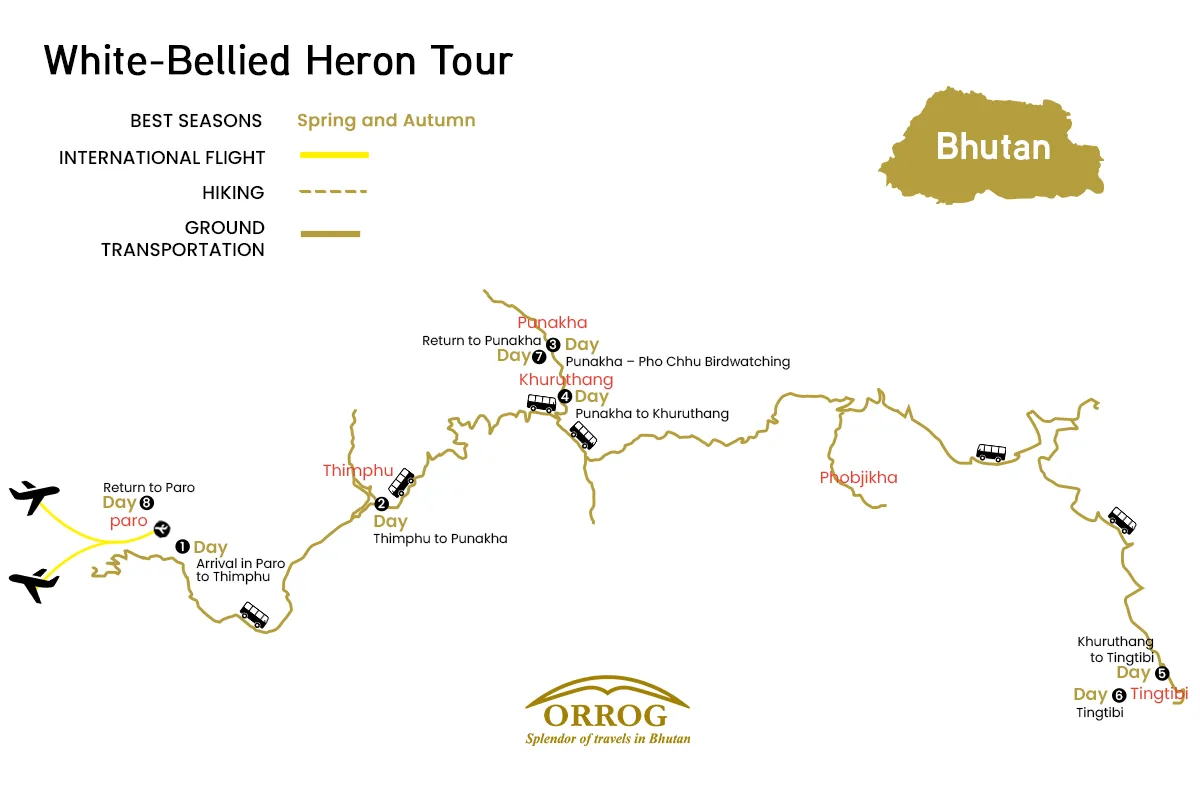
FAQs for White-Bellied Heron Tour
The best time for the trip is from October to April, which will give you an exclusive view of the White-Bellied Heron as they are more active during these months.
Yes, both beginners and birdwatchers will enjoy the tour and get the chance to explore Bhutan’s rich bird habitats, as you’ll have the best guidance for the trip.
Binoculars, a bird field guide, trekking shoes, layered clothing for changing weather, sunscreen, insect repellent, and for photographers, a good-quality camera are recommended.
The tour involves medium, walking, occasional hikes, and travel by vehicle. It’s suitable for most people in good health and with basic mobility.
Apart from the White-Bellied Heron, you may encounter Hornbills, Laughingthrushes, Parrotbills, Drongos, and possibly mammals like golden langurs or barking deer.
Yes, all guides are well-trained, knowledgeable, and often work closely with conservation teams. They understand bird behavior and know the best viewing spots.
Yes, modifications can be arranged as per your interests, such as adding cultural visits or nature treks.
You need a visa and all necessary permits for your trip. These documents can not be received on the day of your arrival, so they must be processed before coming here. After you book a trip with us, we will manage these papers for you. Your Bhutan visa is arranged by Orrog as part of the package.
The main way to come to Bhutan is through Paro International Airport, which is well-connected to cities like Bangkok, Delhi, Kathmandu, and Singapore. Most people arrive by air, but if you plan to come via road, you can enter through Phuentsholing, located on the southern border with India, which is the most commonly used entry point.
It is recommended to apply for the visa at least 20 days before your planned departure date so that there is enough time for processing your Bhutan visa, finalizing your itinerary, and arranging your guides and transportation. Although visa processing itself is relatively fast once payment is received, early preparation helps avoid delays and ensures availability, especially during peak seasons (spring and autumn).
You don’t require a passport-size photo for the visa, but it is wise to carry at least 2–4 recent passport-sized photographs during your trip. These may be needed for local permits, registration, or when applying for a local SIM card upon arrival in Bhutan.
Yes, you can lengthen your stay in Bhutan either before or after your trip. Bhutan’s tourism model requires visitors to pay a Sustainable Development Fee (SDF) and a daily package cost, so any extra days will involve additional charges. Extensions are a great opportunity to explore cultural sites in Paro, Thimphu, or even add another short trip or day hike.
Yes, Bhutan requires full tour payment in advance before your visa can be processed and issued. The government of Bhutan regulates this policy to ensure that all travel arrangements are confirmed through a licensed Bhutanese tour operator. We are a licensed tour operator that ensures you have everything you need for a trouble-free trip.
Any personal expenses are not covered in the package like:
- Tips for your guide and other staff
- Bottled drinks and snacks(personal expense)
- Souvenirs or local crafts
Credit cards are easily accepted in major cities like Paro and Thimphu. But in remote areas, you may not have access to a card or an ATM. So, it is best to carry some cash before heading for the trip.
Tipping is not mandatory, but it is a widely appreciated gesture and a customary way to show gratitude for good service. The tipping guideline would be to give USD 5-10 per day as a tip for the guides and other staff.
Paro International Airport is the only international airport in Bhutan. It is well connected by flights from cities like Bangkok, Delhi, Kathmandu, and Singapore.
Yes, airport pick-up and drop-off are included in the package. We will have your guide and driver meet you at the airport and transport you to your hotel.
While Bhutan's roads are mostly paved, some parts are narrow, winding, and occasionally affected by weather. However, we ensure your travel is safe, well-maintained, and driven by an experienced professional throughout the journey.
The Bhutanese Ngultrum is used in Bhutan. All local transactions during the trip will be in BTN.
US Dollars (USD) are generally accepted at larger hotels, souvenir shops, and tour operators, particularly in Paro and Thimphu. However, it’s advisable to convert your currency to BTN for general purchases in rural areas. Other currencies like the Euro or the Pound are not commonly accepted directly.
No, credit or debit cards are not accepted on the trip, as it takes you through remote regions with no banking or electronic payment access. All trip-related payments like accommodation, meals, permits, etc, are paid in advance.
You can exchange foreign currency at the Paro International Airport, at banks, or through licensed money changers in cities like Thimphu and Paro. It's best to exchange enough cash before heading out on the trip.
The national language is Dzongkha, but many Bhutanese also speak English. If you speak English and are worried about communicating with the local people, you will have your guide as a translator.
Yes, all licensed tour guides in Bhutan are required to speak fluent English. Many are also trained in other languages such as German, Japanese, or French. Communication during the trip will be smooth and clear in English.
Most signboards, tourist maps, and information brochures are written in English, especially in tourist destinations like Paro, Thimphu, and trailheads. Directional signs along routes are often labeled in both Dzongkha and English.
No, learning Dzongkha is not at all needed for the trip, but knowing a few basic words like "Kuzu zangpo la" (Hello) or "Kadrinche la" (Thank you) is a good way to interact with the locals.
Language barriers are minimal, as your guide will handle all communication with locals and support staff. Your guide will translate for you during your interaction with the locals.
To greet people, you can greet with locals “Kuzu zangpo la” (Hello) by performing a slight bow. Most common greetings include physical greetings, such as shaking hands less visible, especially in rural areas.
Yes, but remember to seek permission, especially when taking photos of monks, locals, or temples. Please note that clicking photos is not allowed at most religious sites.
Bhutan typically uses Type C, Type D, and Type G electrical outlets. Standard safe voltage is 230V and frequency is 50Hz; therefore, ensure that your equipment is compatible with this voltage.
Indeed, it is highly advised to take along a universal travel adapter, particularly one to fit a variety of types of plugs, because plugs can be different in a hotel or a guesthouse.
Bhutan follows Bhutan Time (BTT), which is UTC/GMT +6 hours. This time zone remains consistent throughout the year.
No, Bhutan does not observe daylight saving time. The country maintains the same time year-round.
Bhutan is 30 minutes ahead of India. For example, 12:00 PM in India is 12:30 PM in Bhutan.
Yes, souvenirs can be bought in Paro or Thimphu before or after the trip.
Some popular souvenirs include hand-woven textiles (kira and gho fabric), prayer flags, thangka (religious scroll) paintings, handmade paper products, traditional masks, and Buddhist artifacts.
You can do some gentle bargaining in local street markets. However, in government-run shops and fixed-price stores, prices are usually non-negotiable.
Yes, you can easily purchase a SIM card upon arrival in Bhutan. We will assist you with the process, and you'll need a passport copy and a passport-sized photo.
No, internet access is not available during the trip. However, Wi-Fi is available in hotels in Paro and Thimphu before and after the trip.
Along our trip, we will go through different places. So, we will stay in accommodation that is available, ranging from boutique wellness resorts and eco-lodges to comfortable 3-star hotels and trekking campsites.
Yes, Bhutan has a growing number of wellness-focused retreats and luxury lodges that offer spa, yoga, and meditation programs. So, you will be staying in wellness resorts to lift your overall experience.
Reviews & Ratings
-
Guarantee -
Thimphu,Bhutan -
975+17160228
Ready to Explore Bhutan?
Start your journey today and discover the magic of Bhutan with our expert guides and carefully crafted tours.
Book This Trip
-
No booking or credit card fees -
Best price guarantee -
Full customize trip
Ask a Question
Feel free to ask us anything about this tour. A travel expert will then get back to you as soon as possible
Ready to Explore Bhutan?
Start your journey today and discover the magic of Bhutan with our expert guides and carefully crafted tours.
